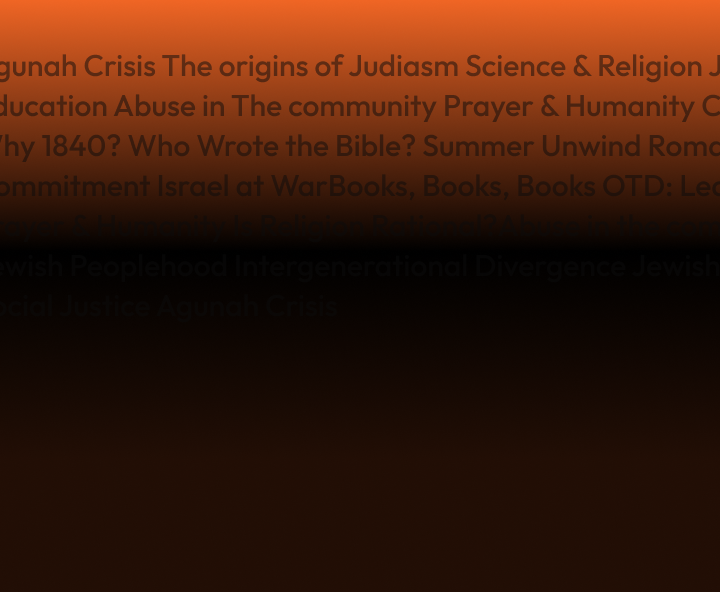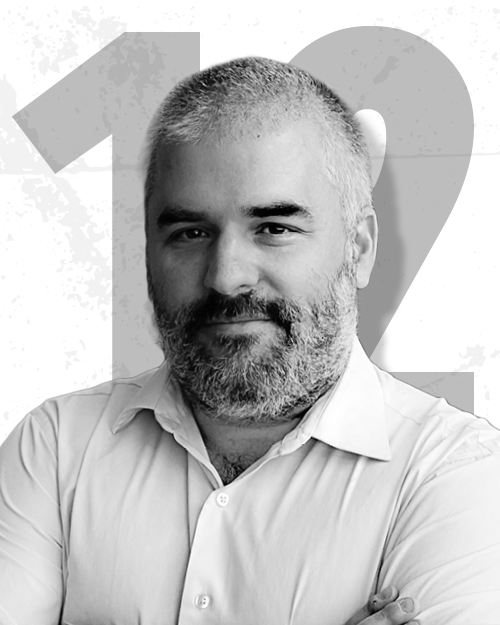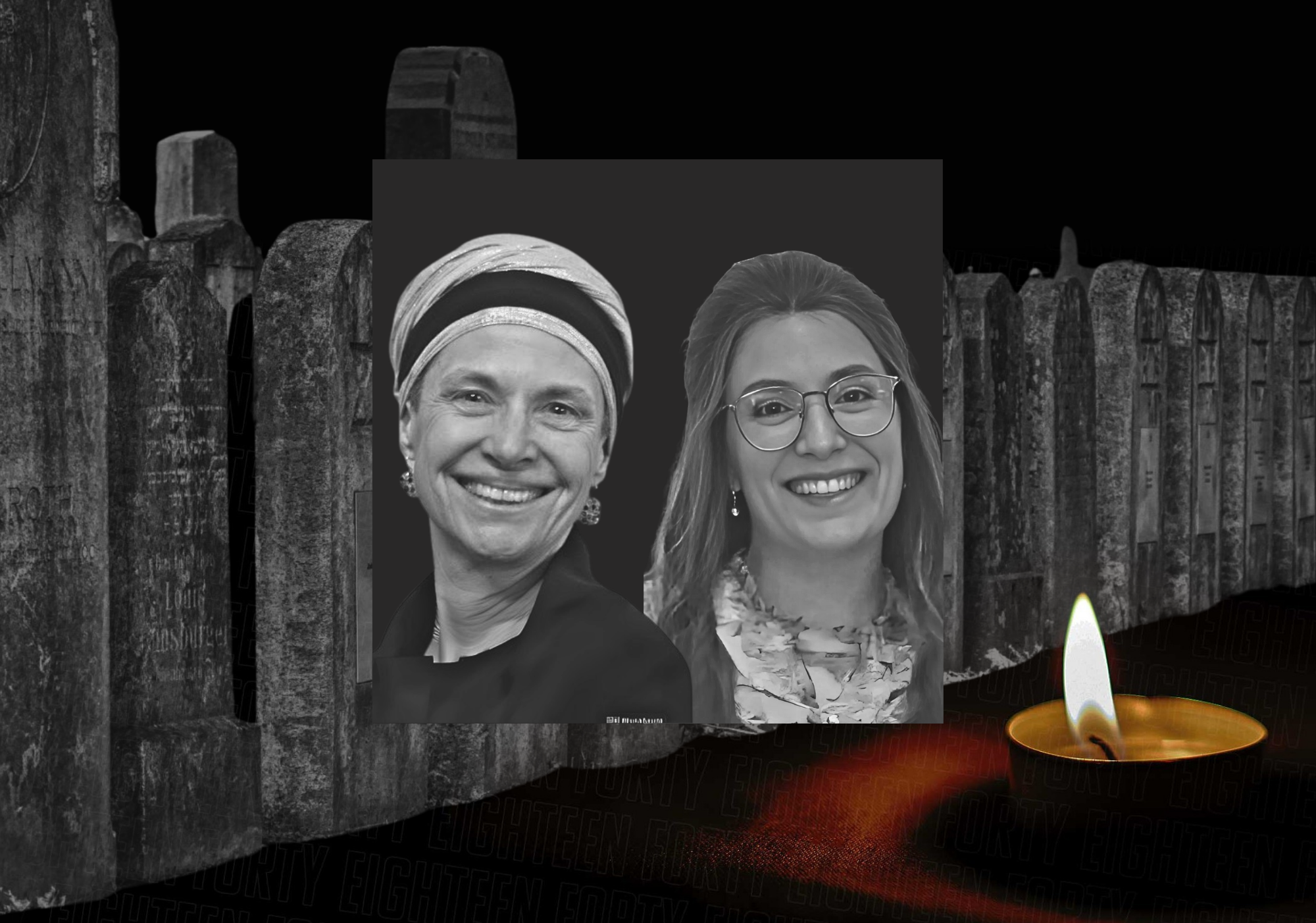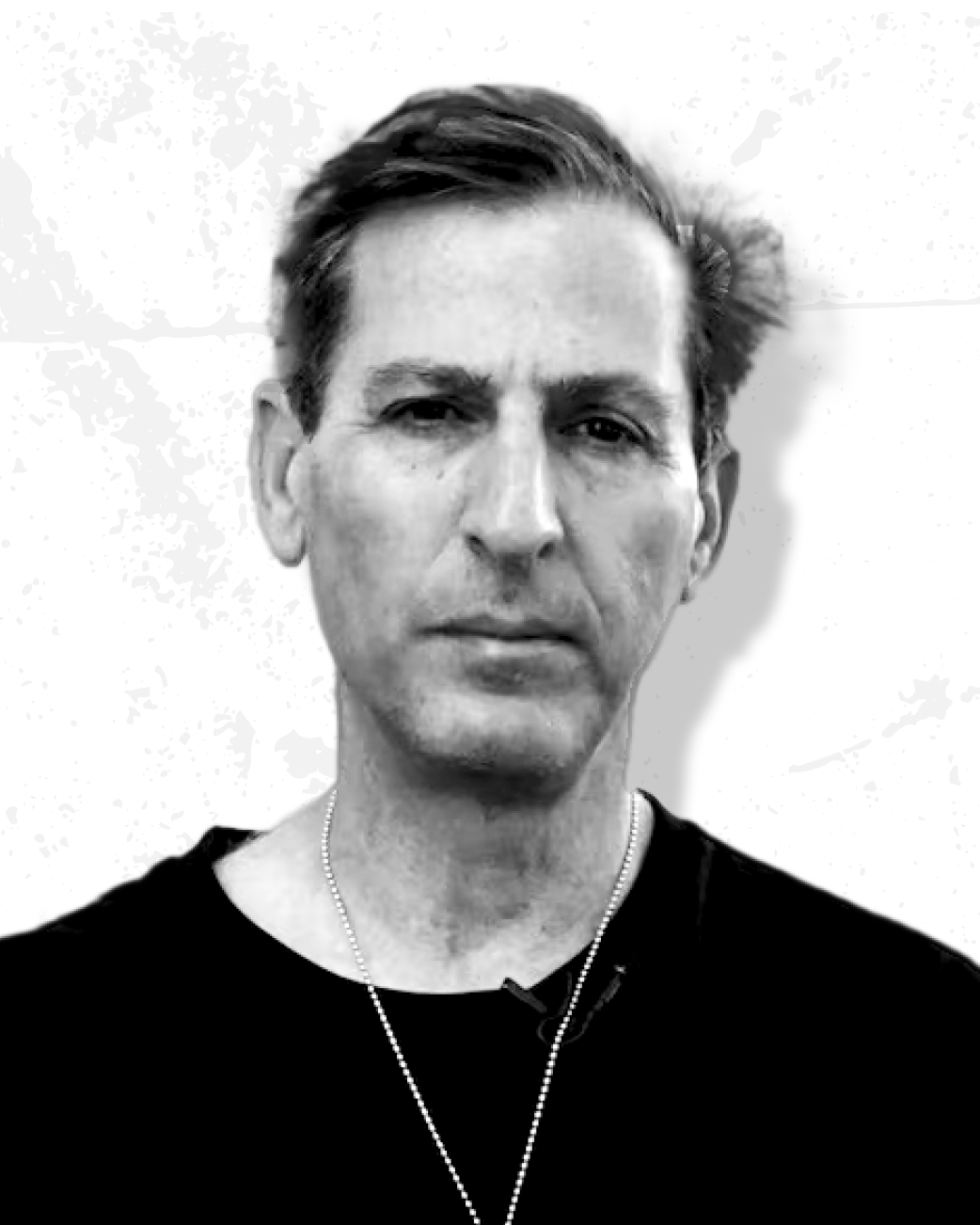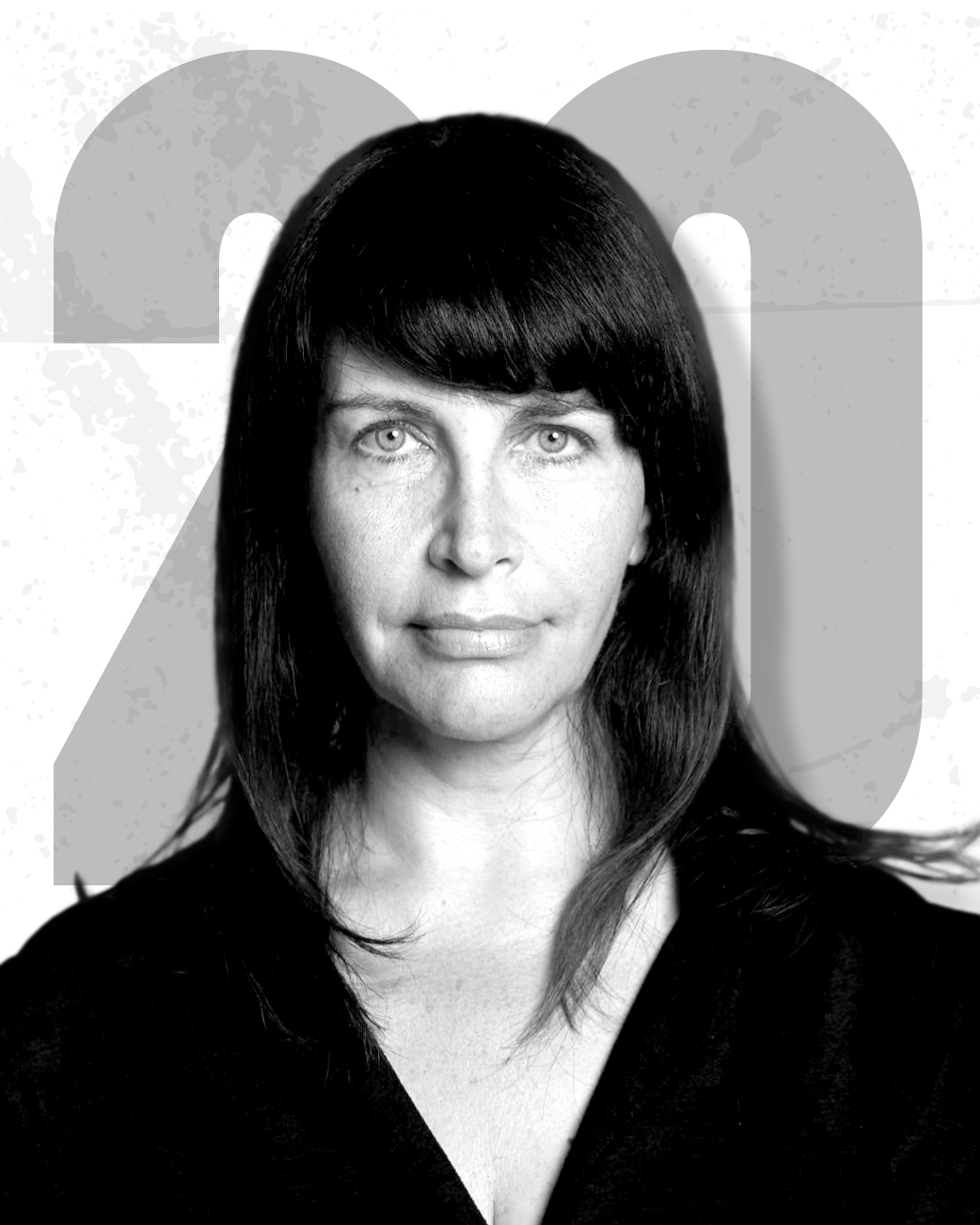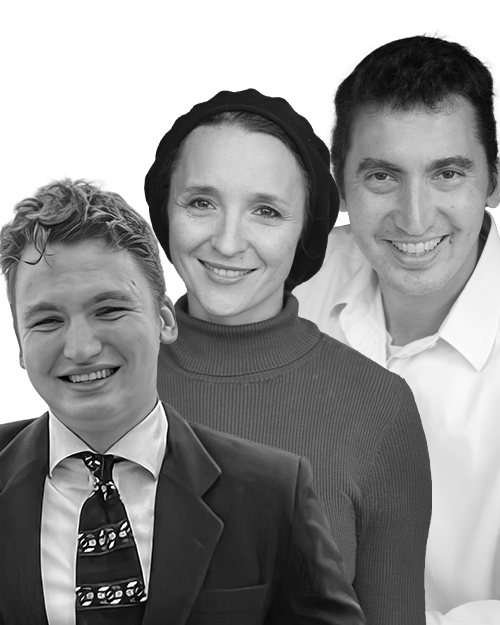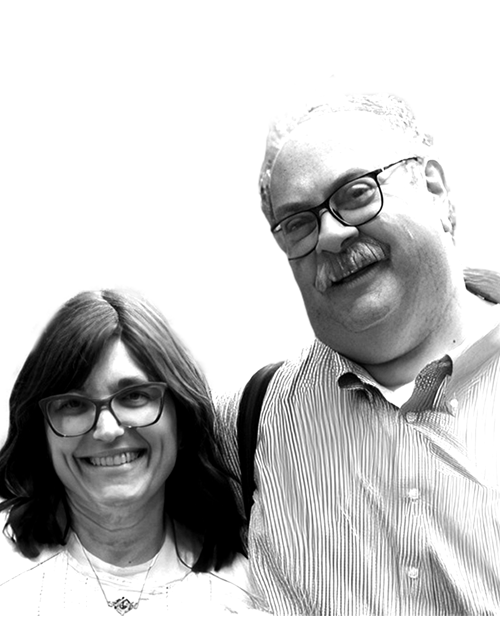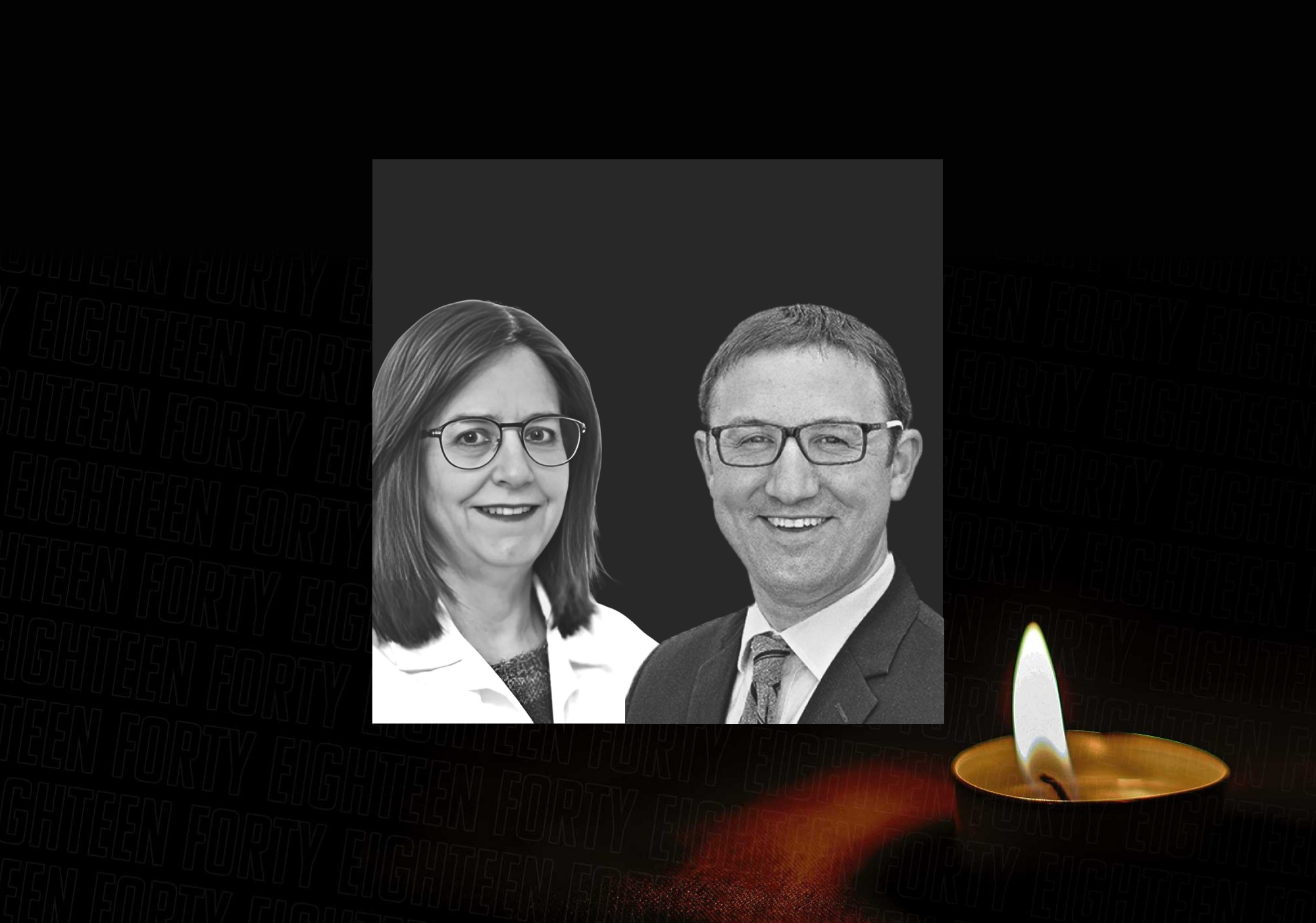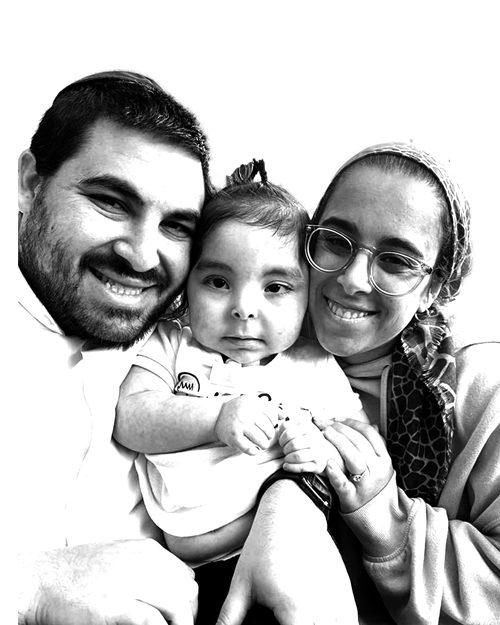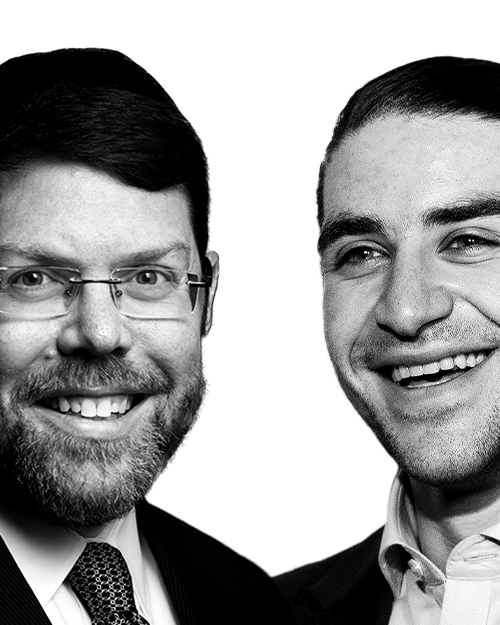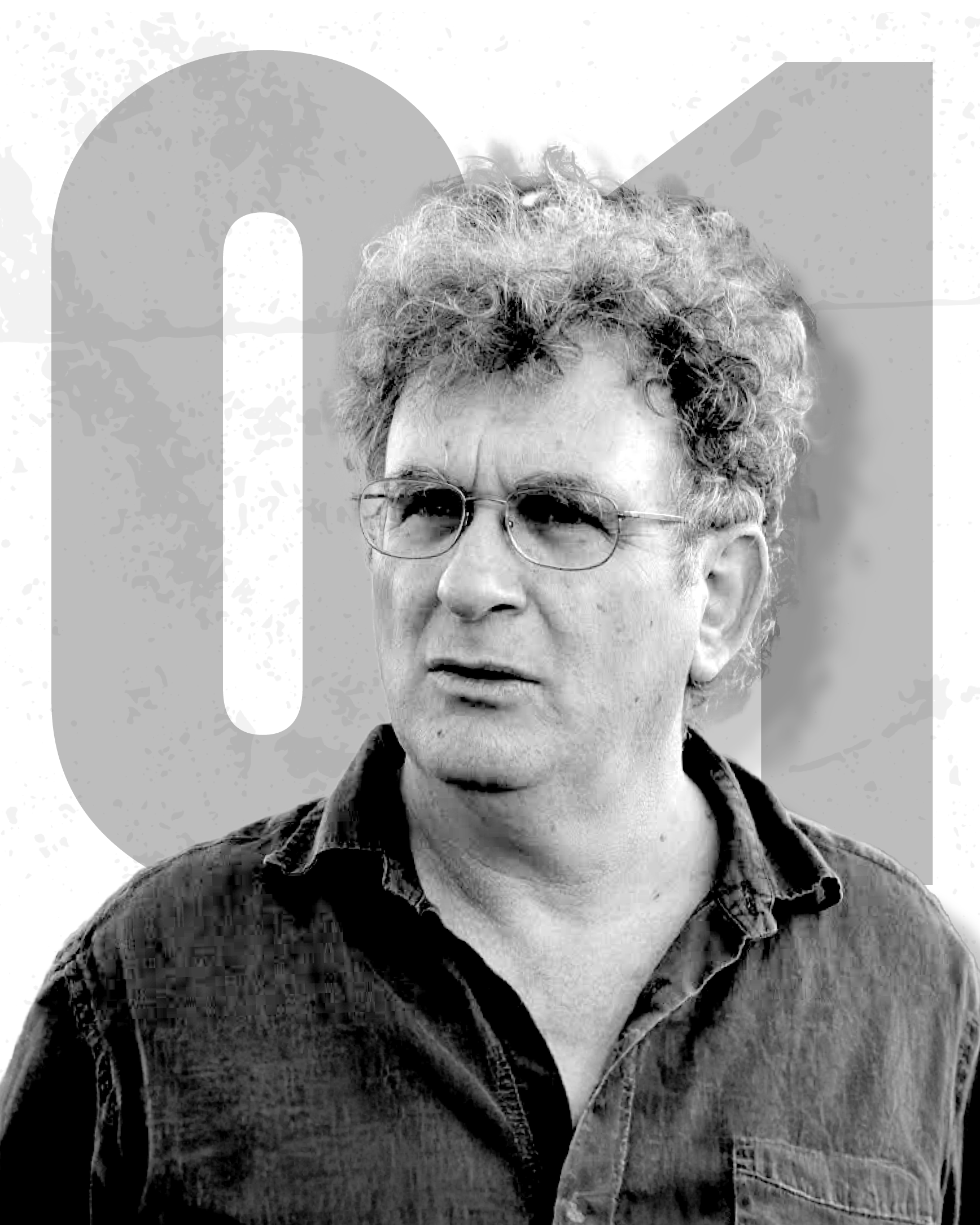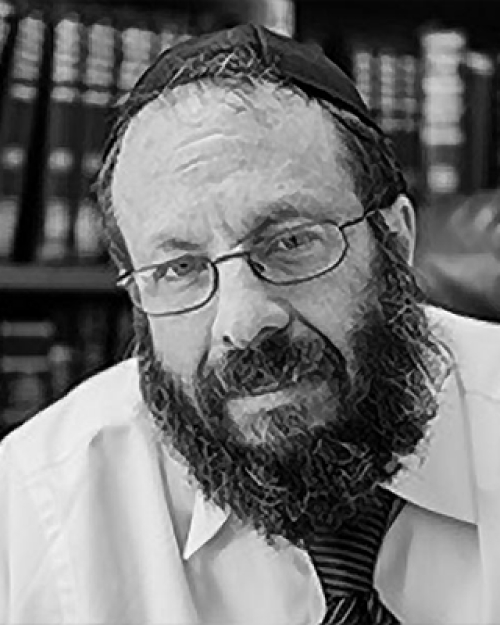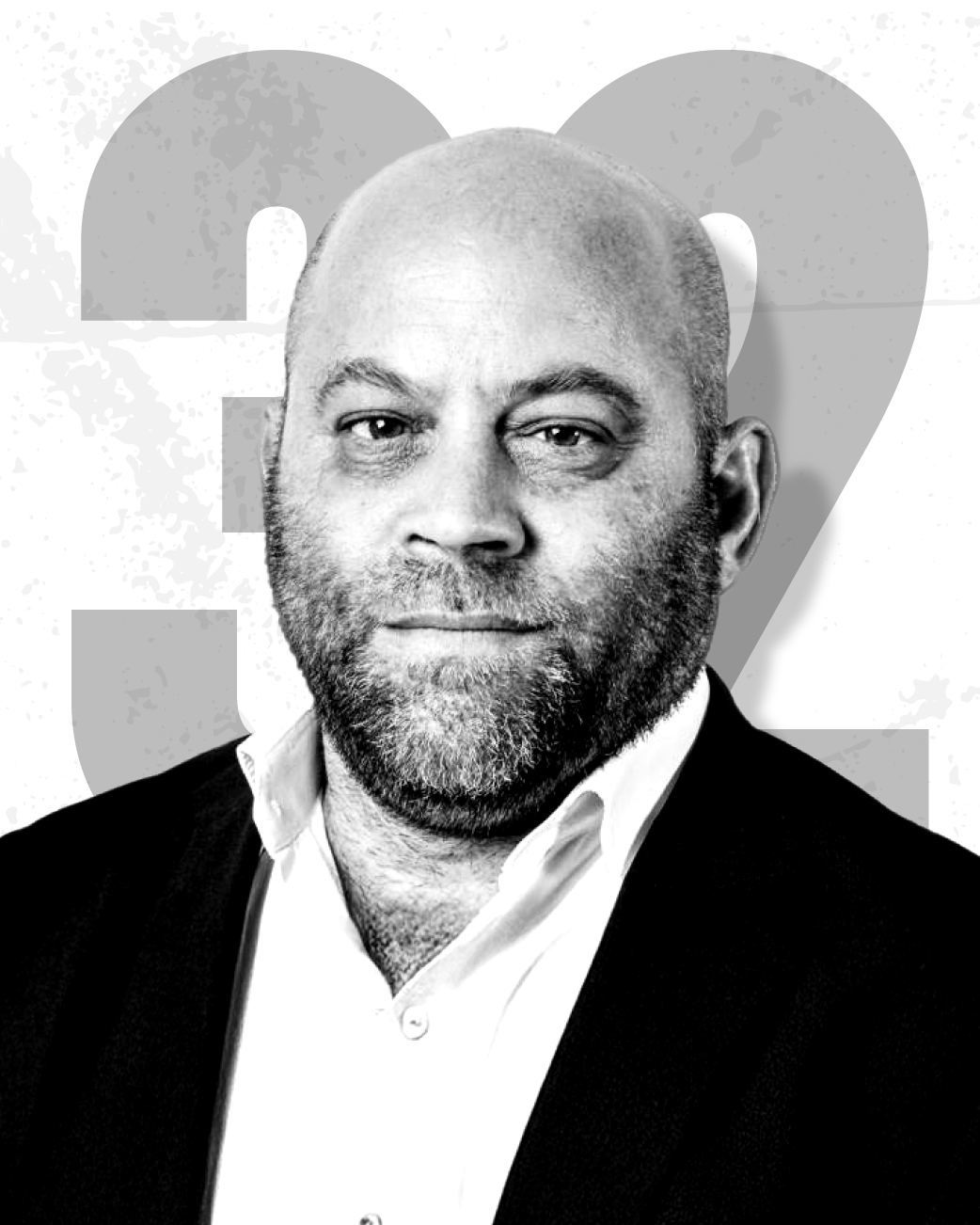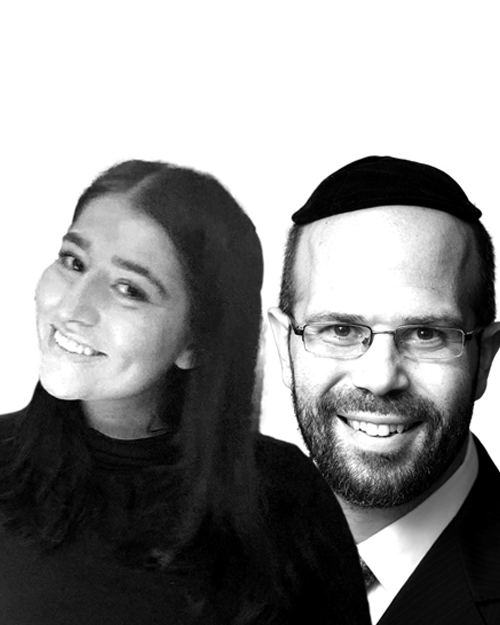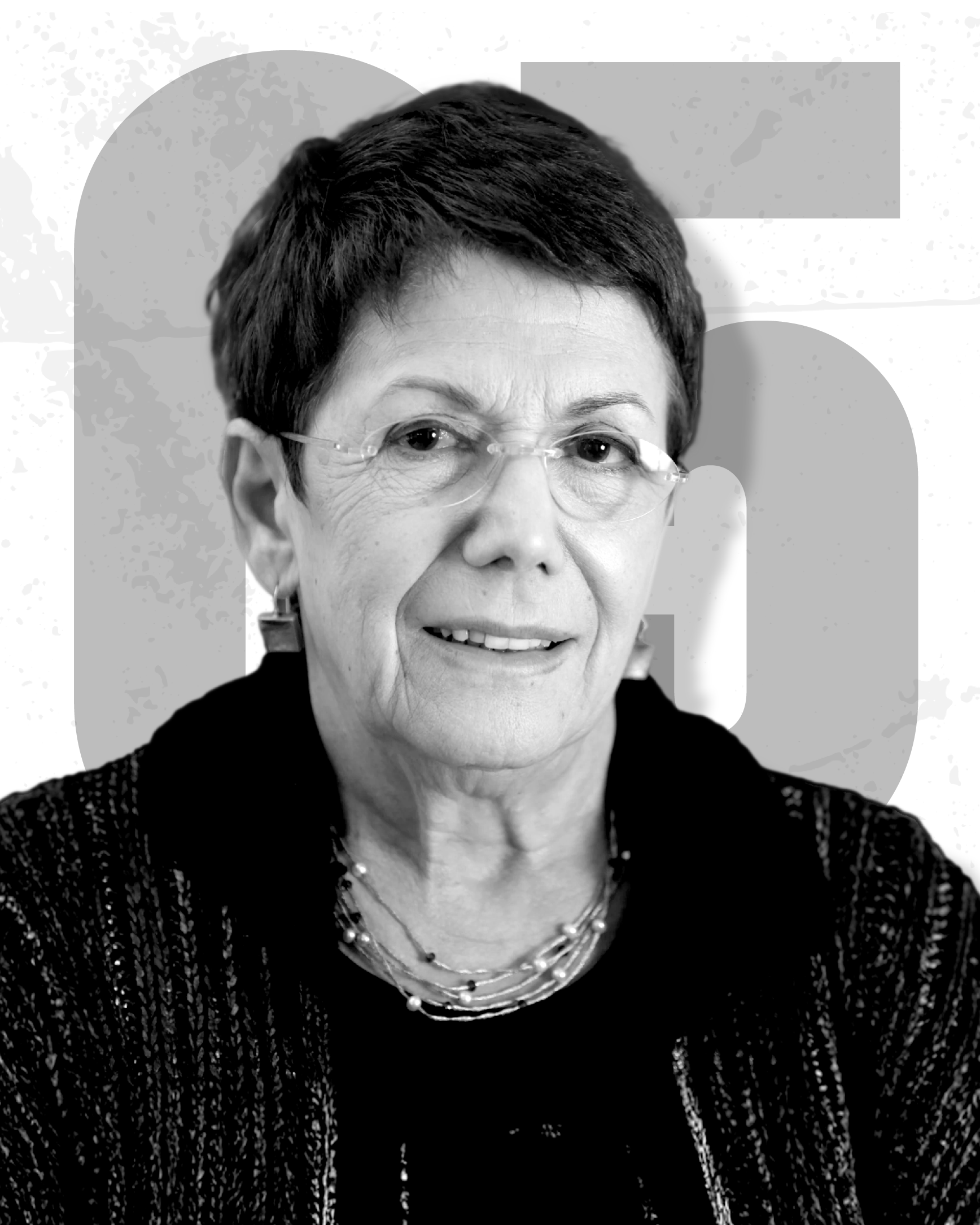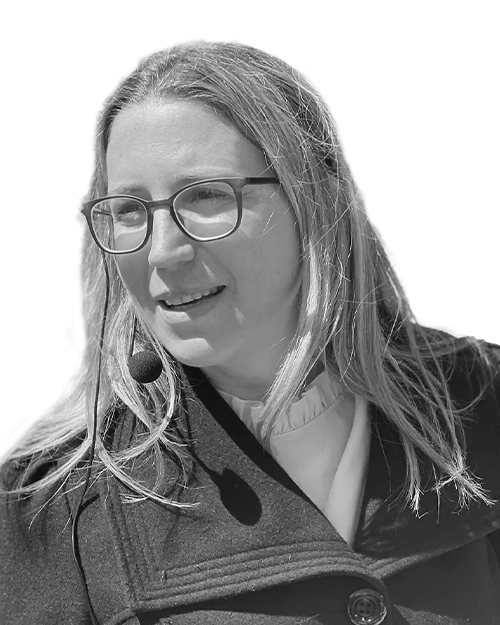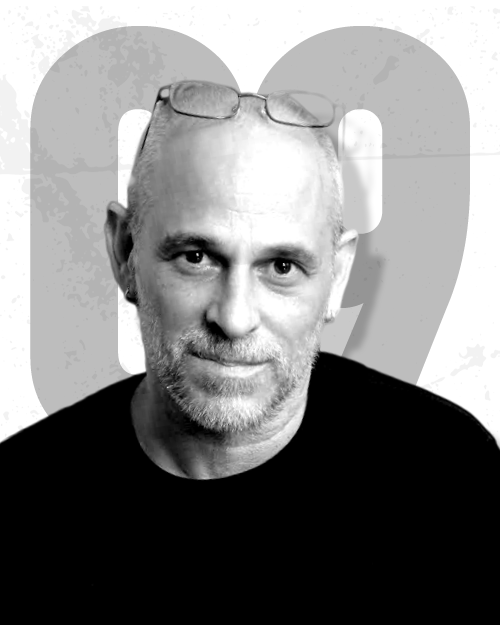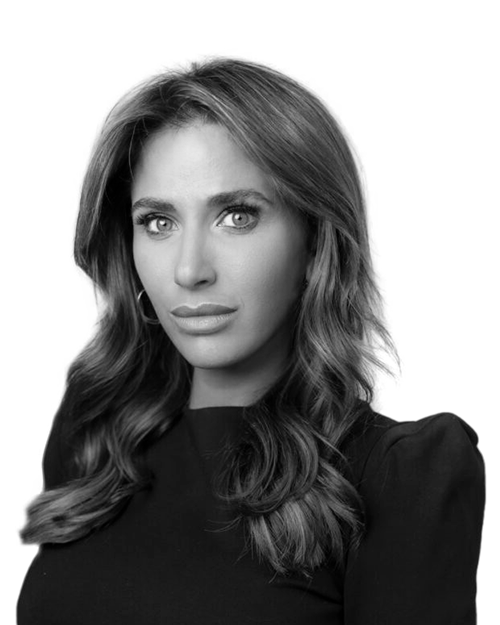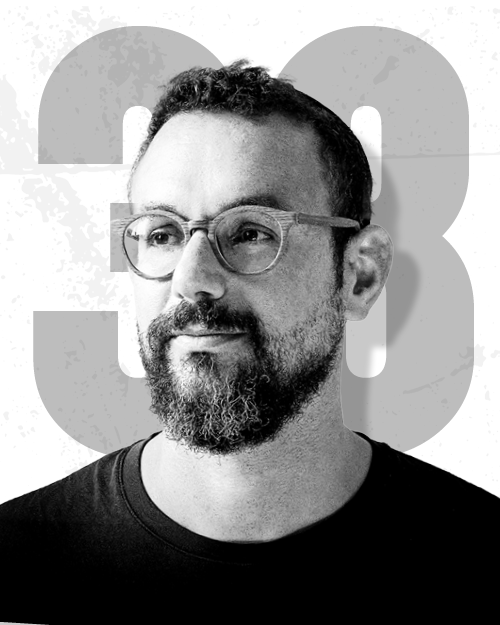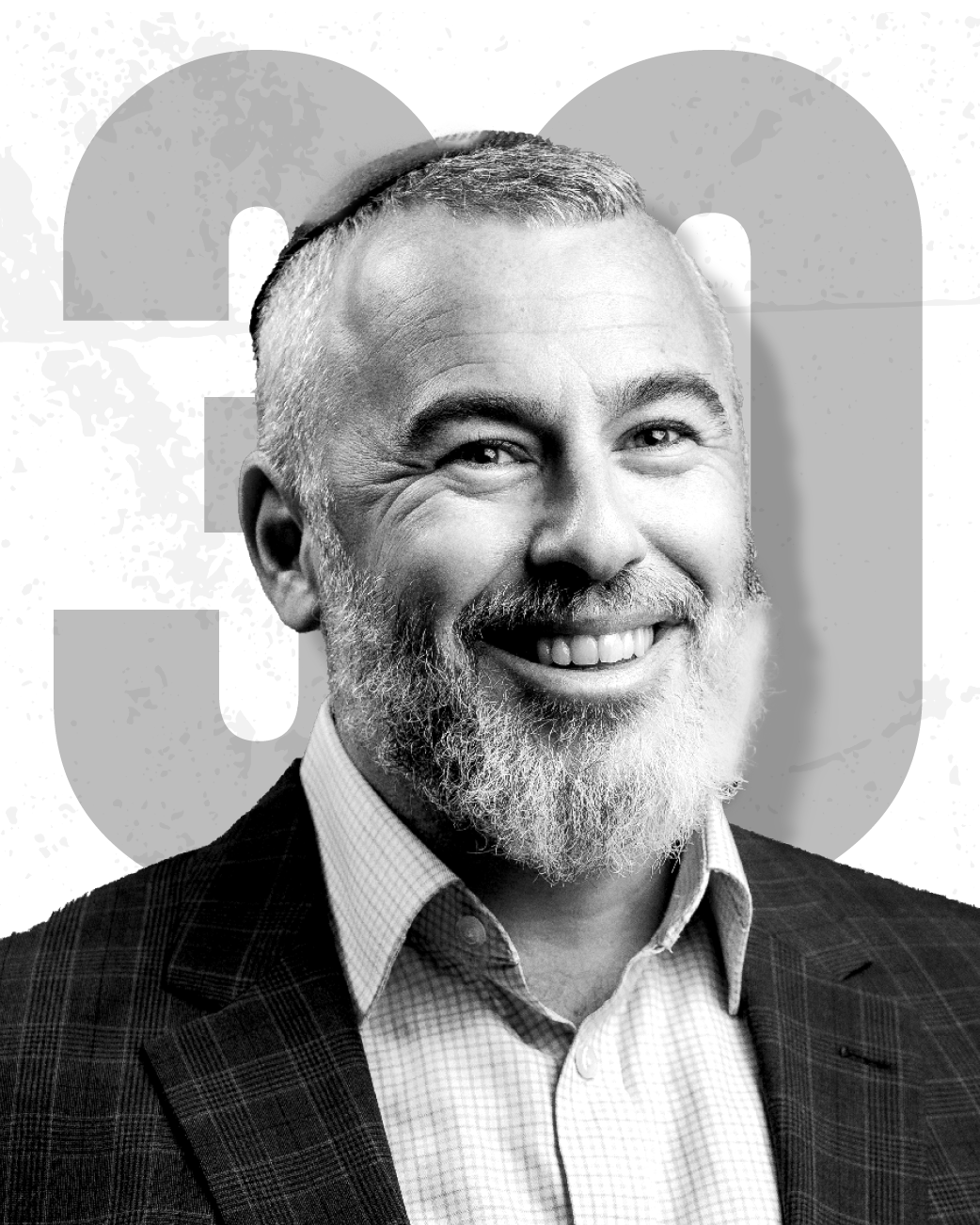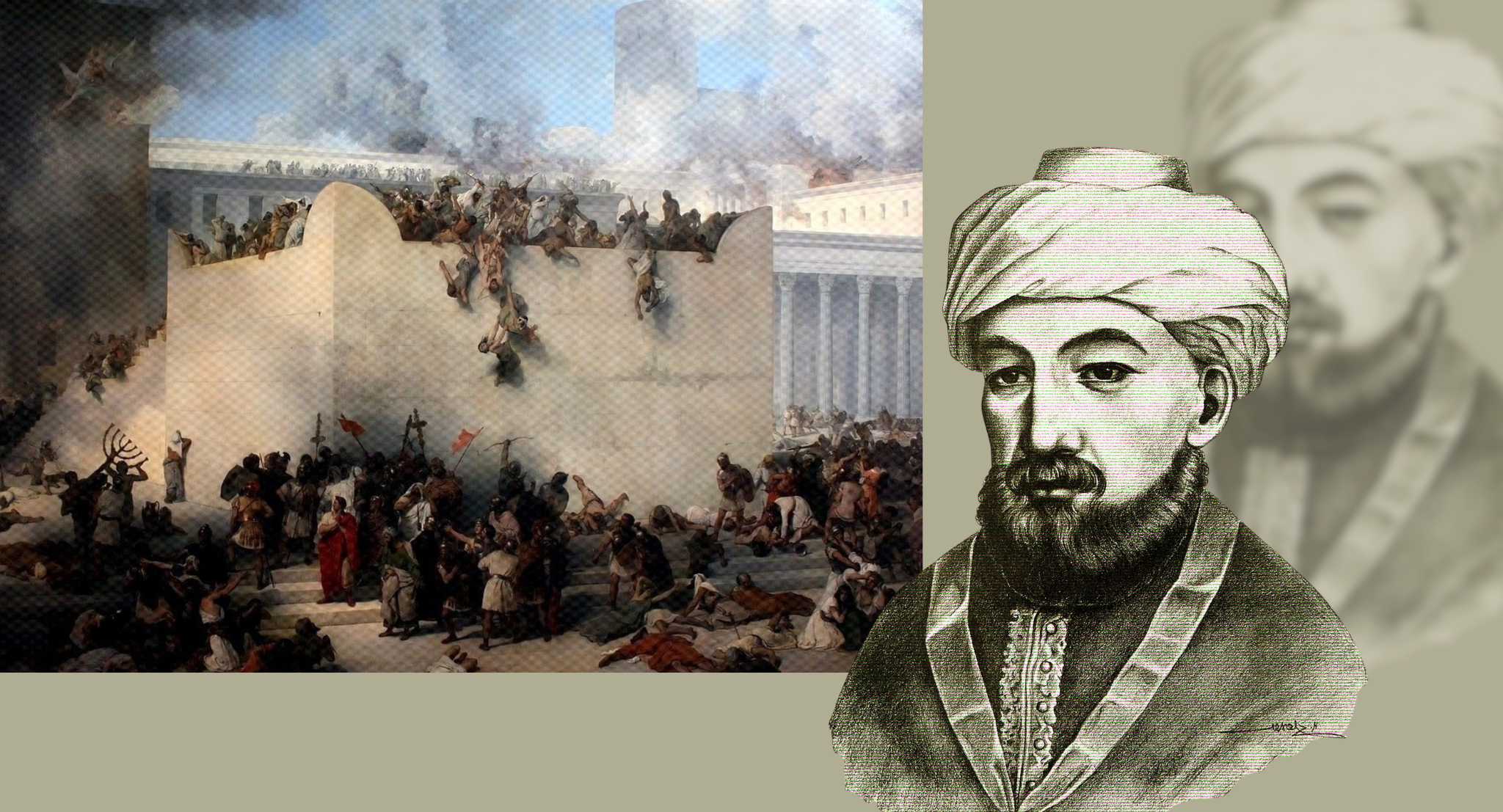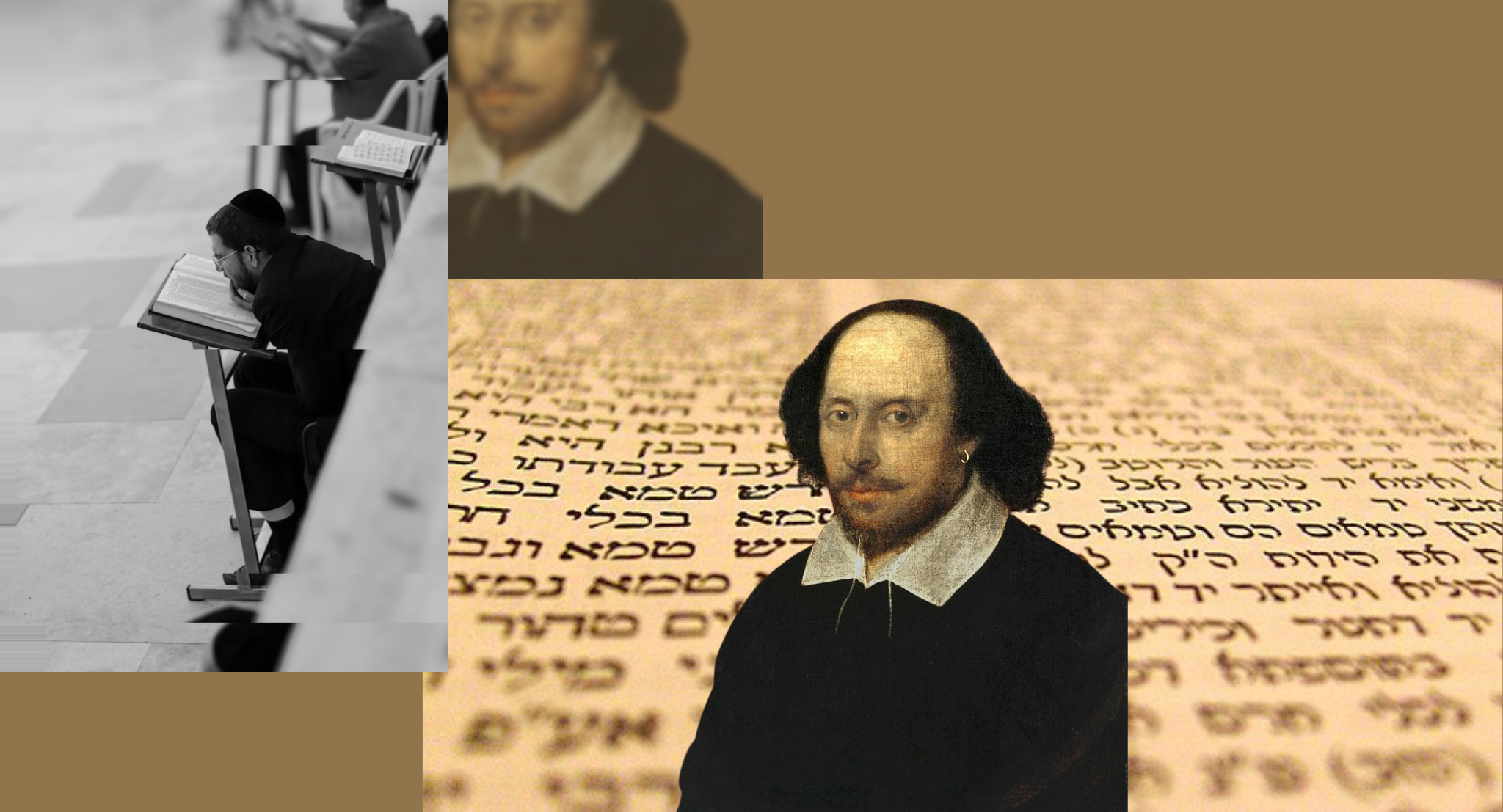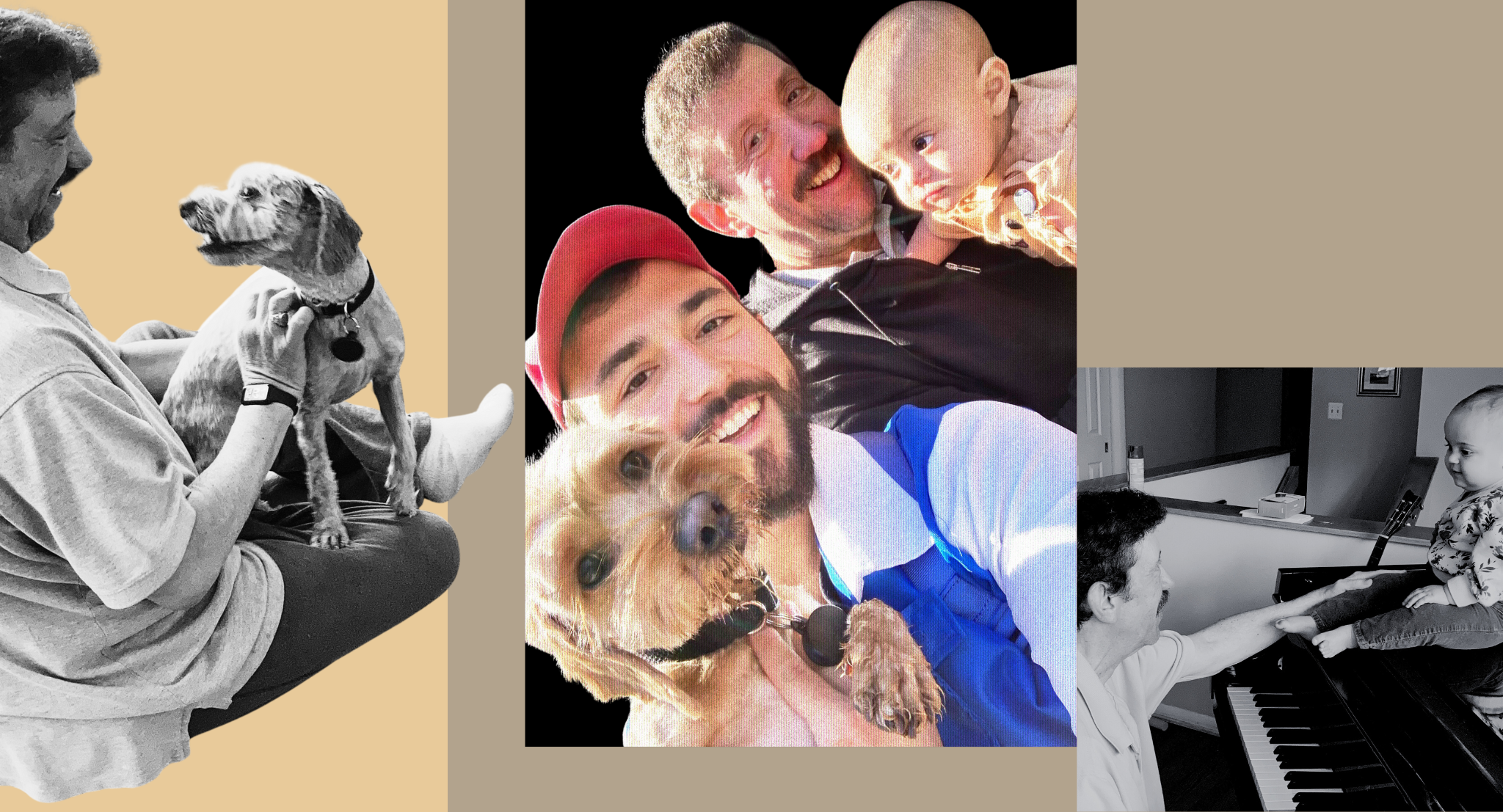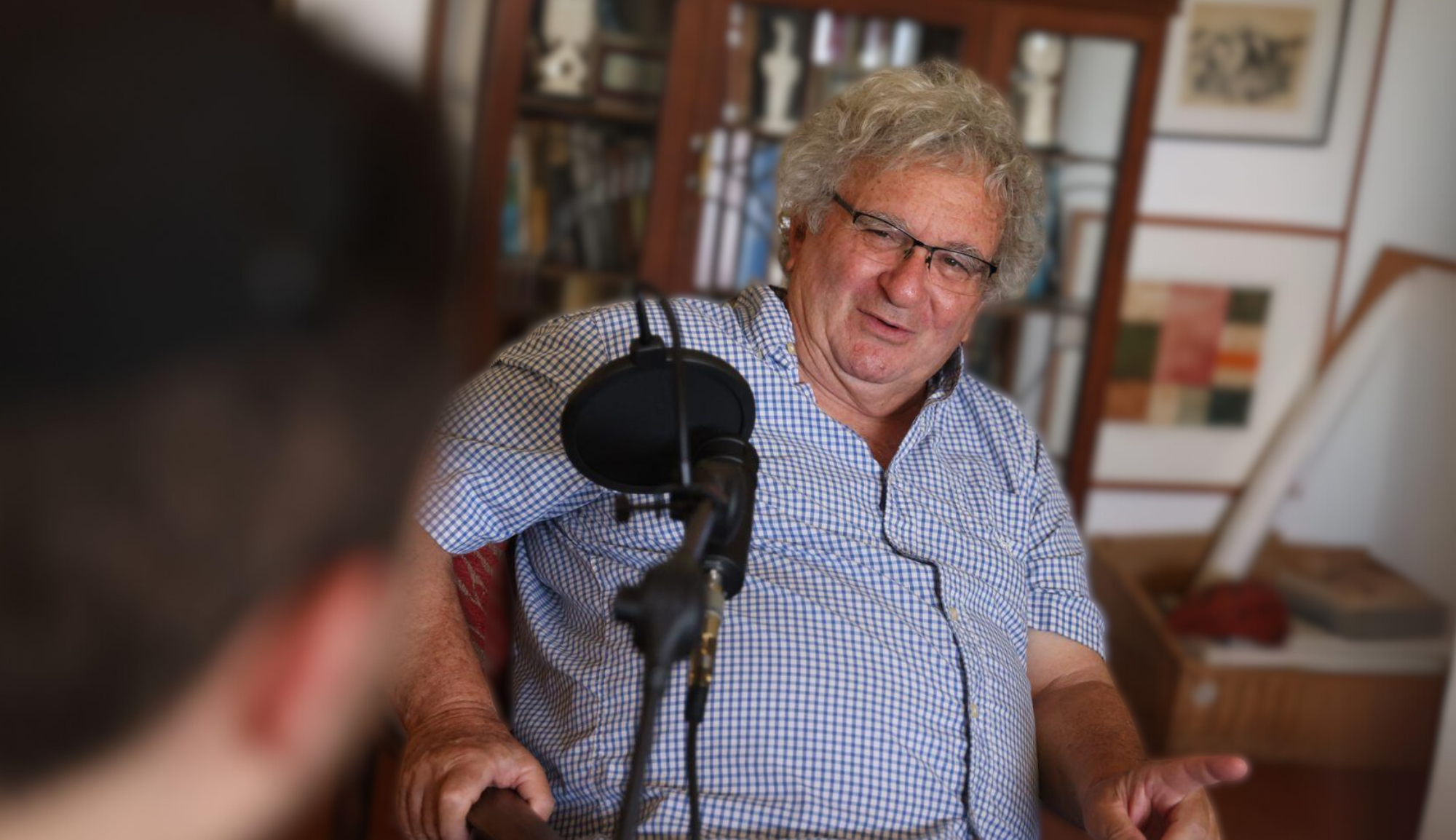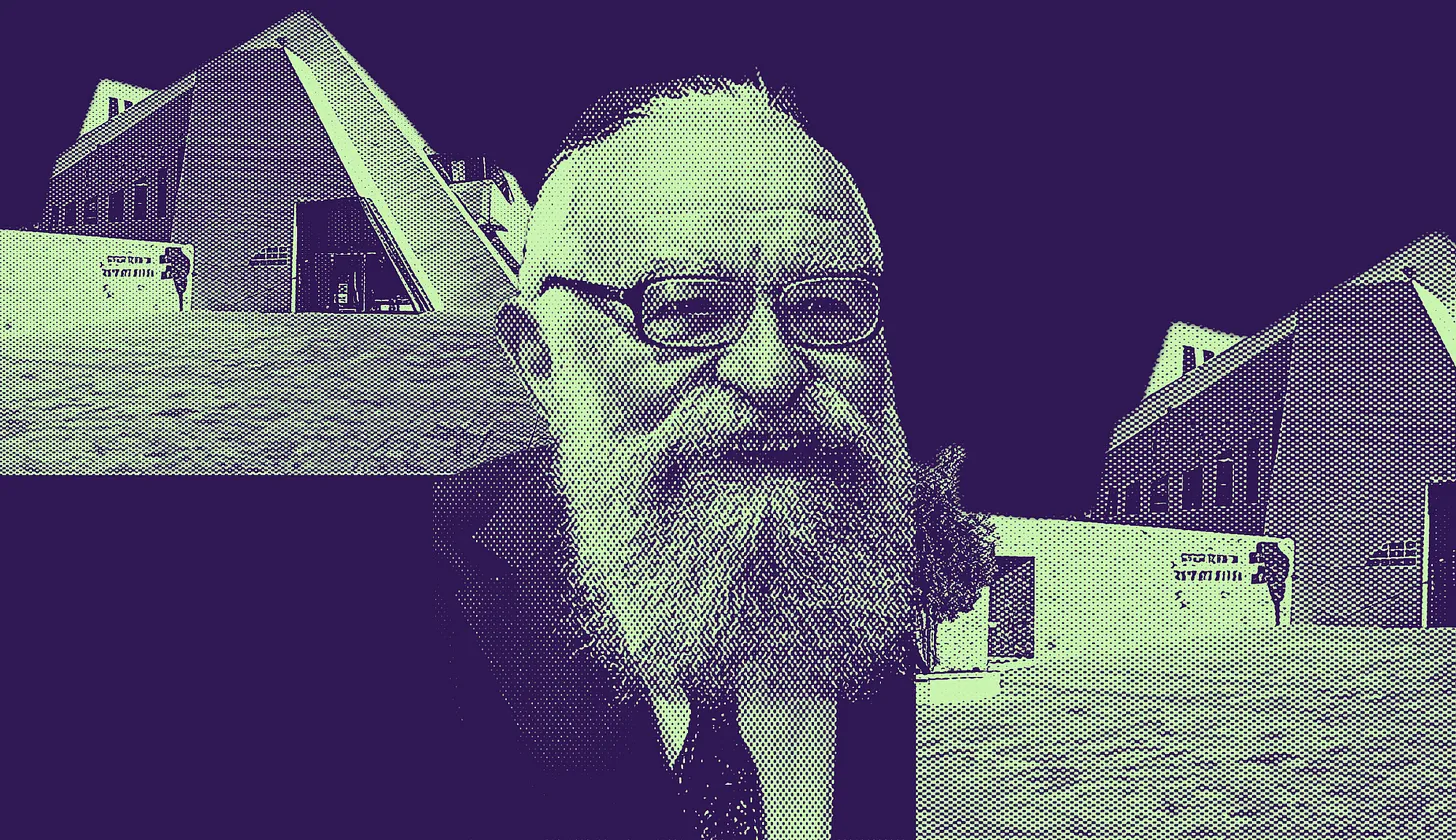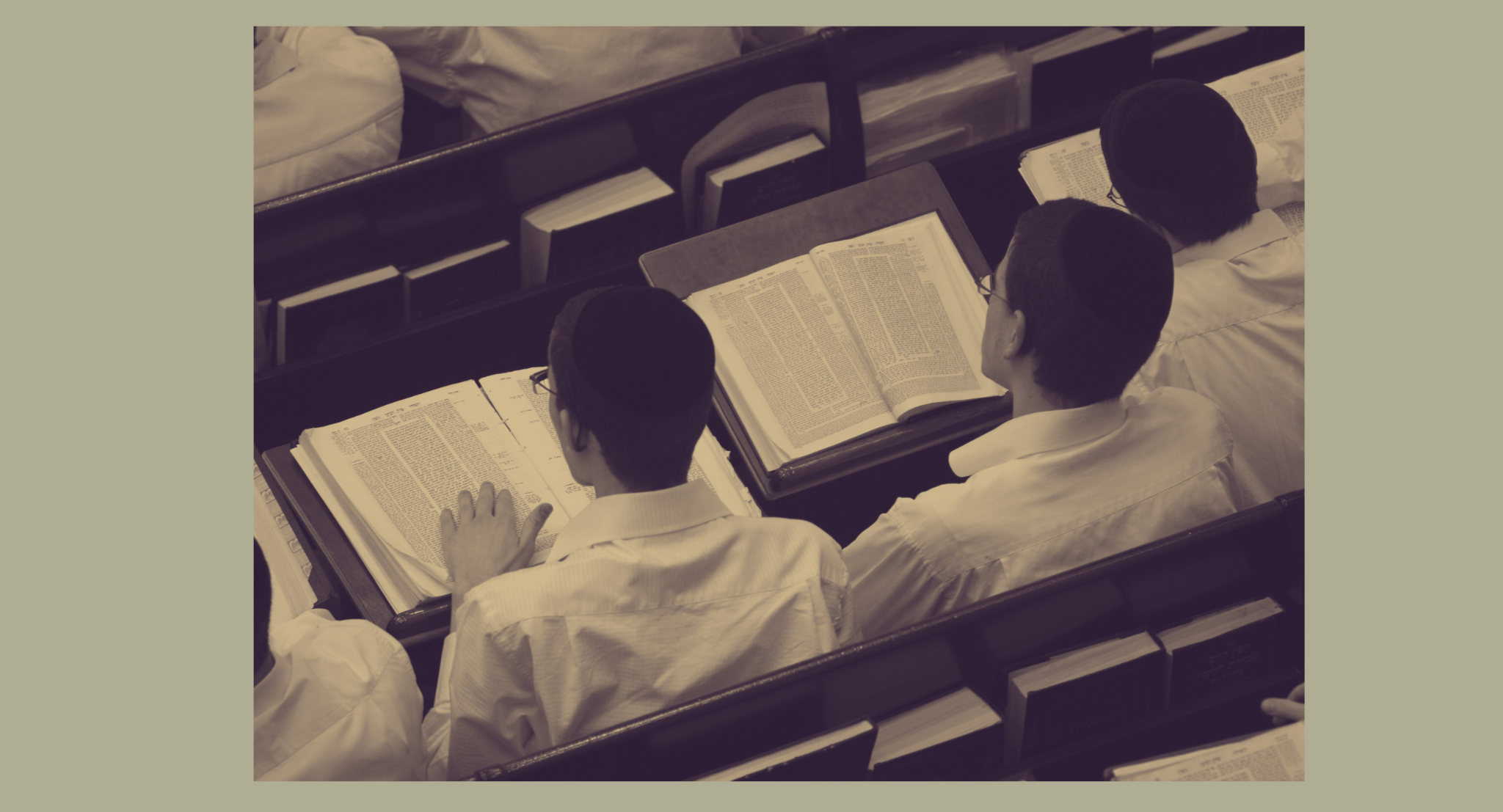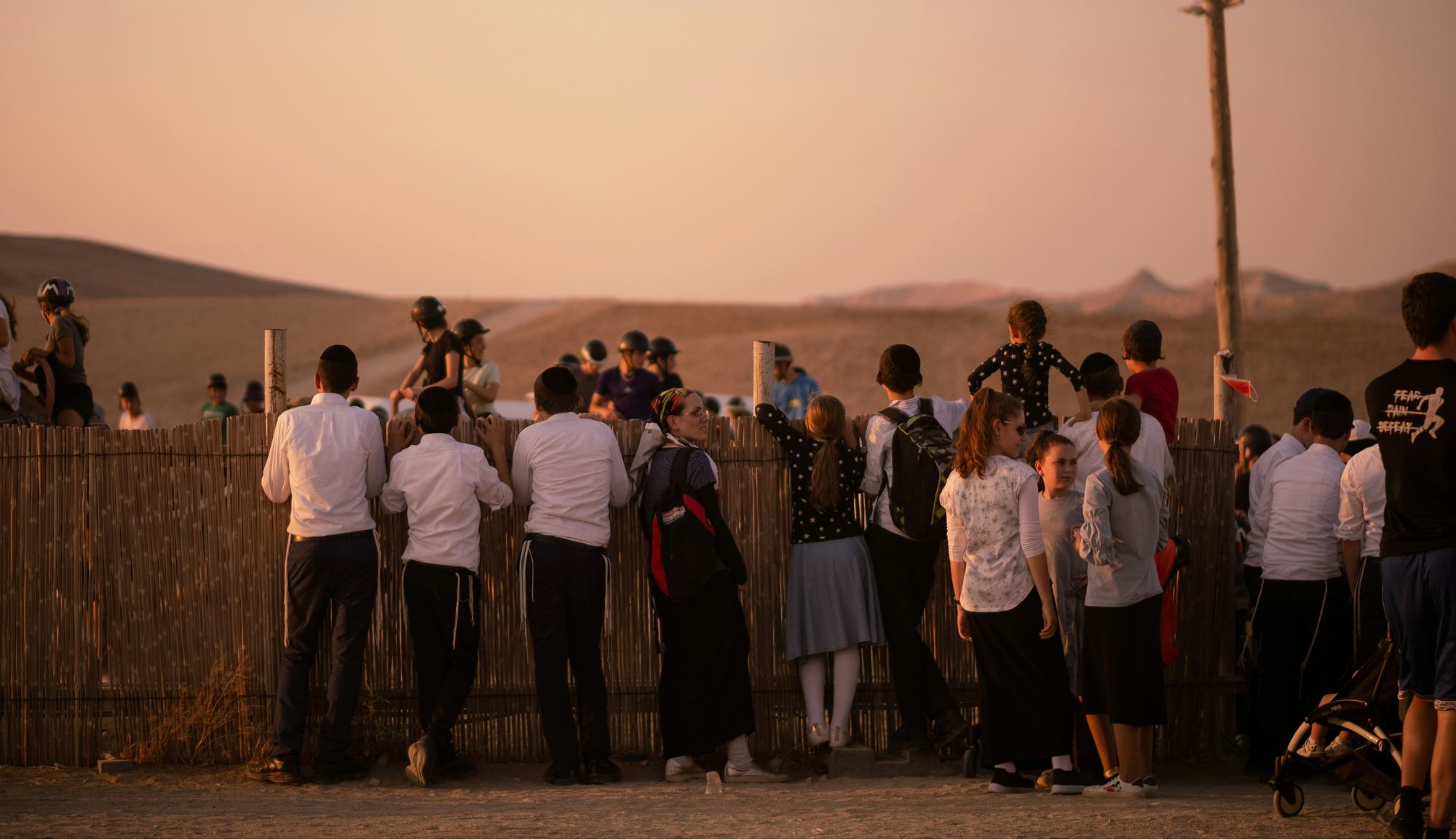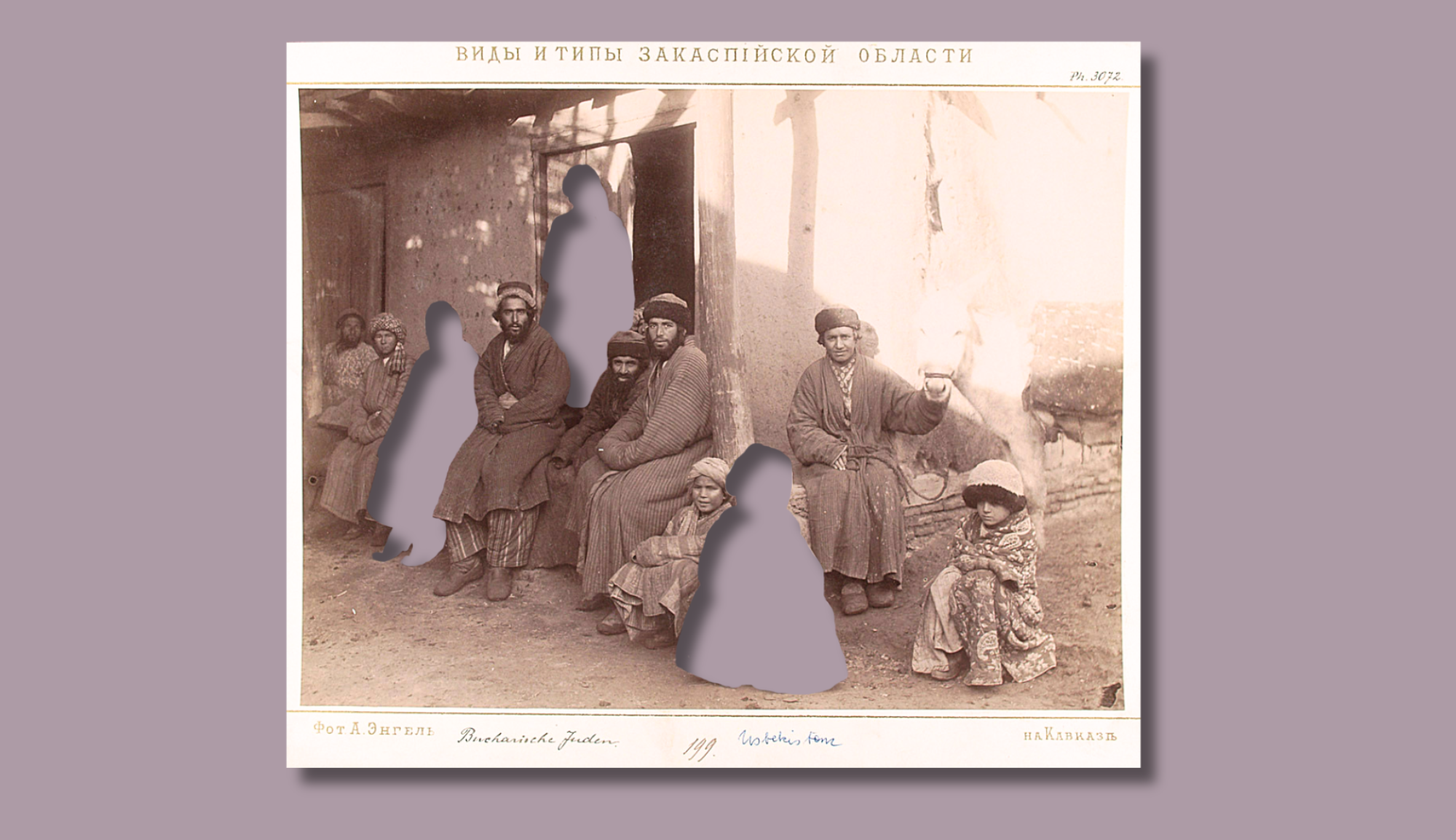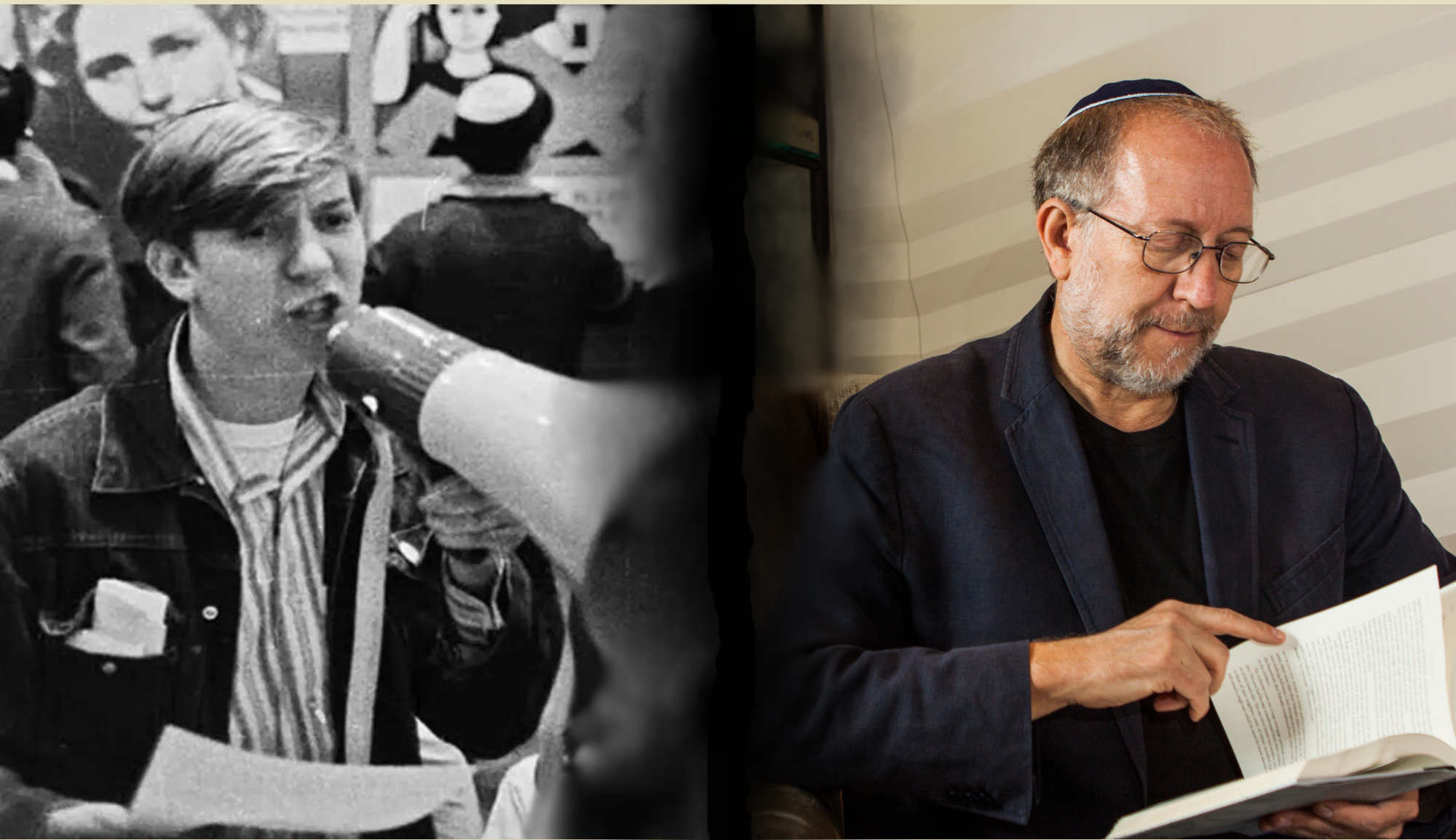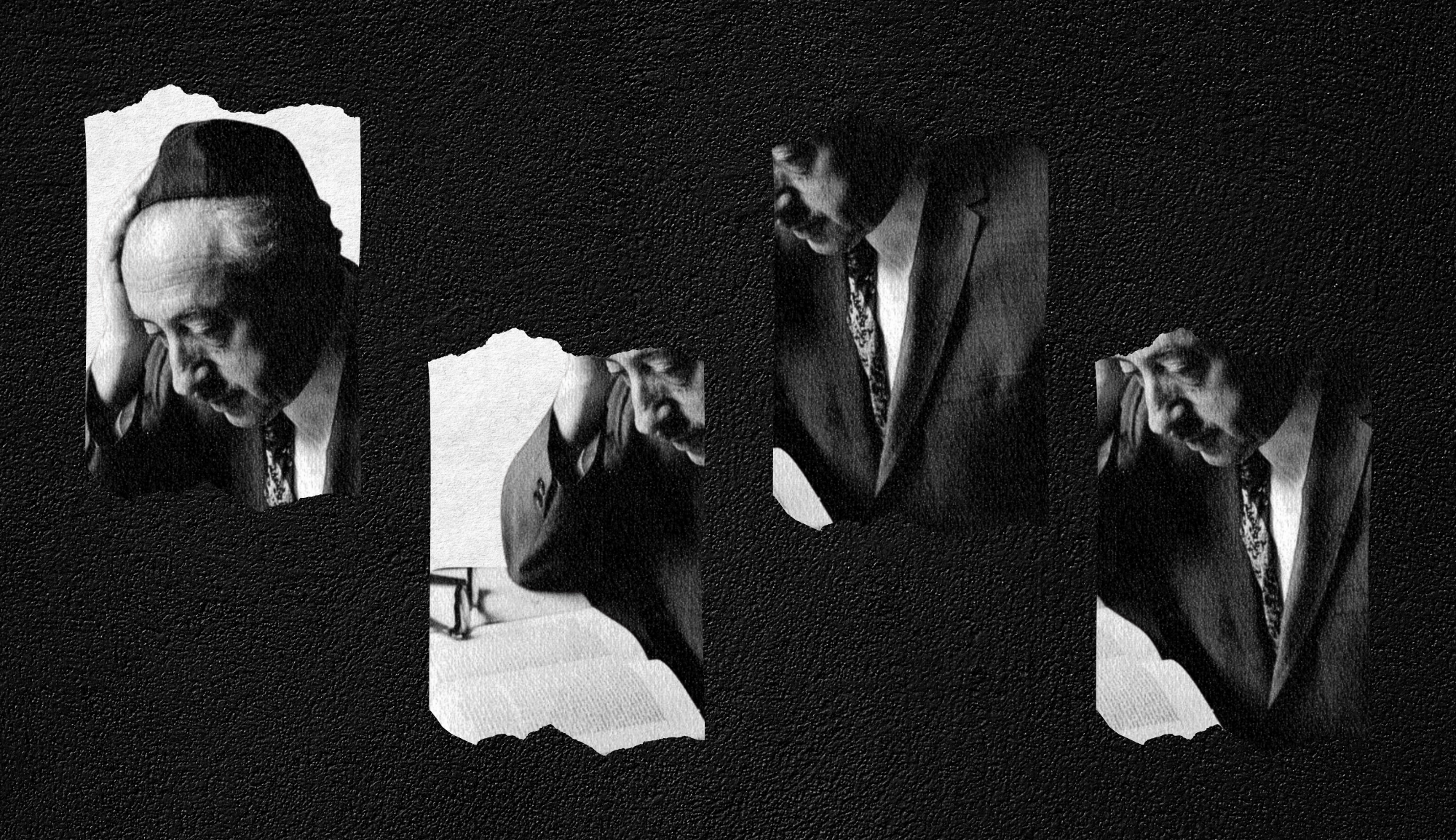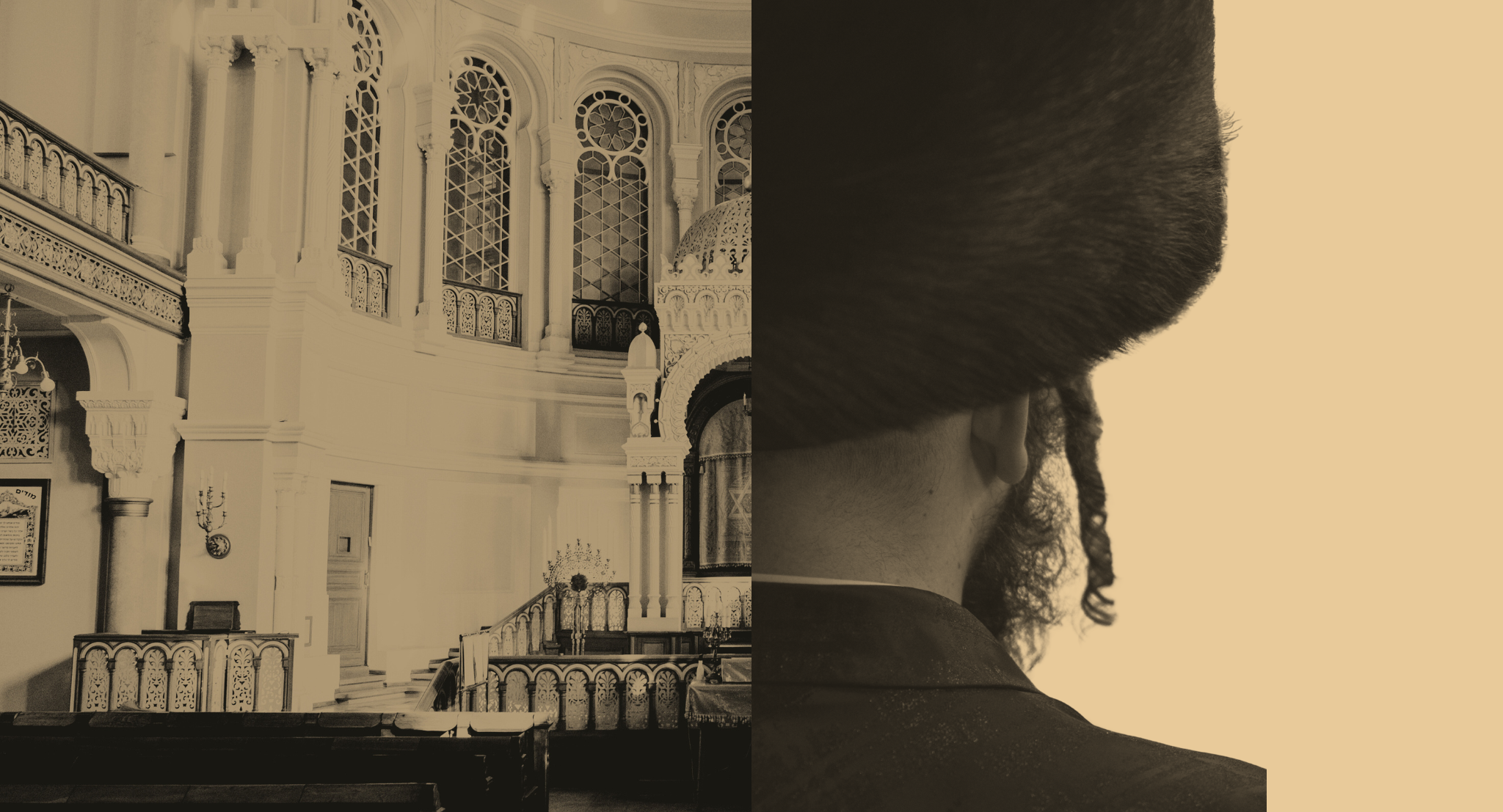Summary
In this episode of the 18Forty Podcast, we sit down for a special podcast with our host, David Bashevkin, to review the first topic that 18Forty covered: Talmud.
Though Judaism has many facets to its practice, Talmud study has long been one of its hallmarks. It is a sprawling text with many commentaries, and so can be analyzed from any number of perspectives. This episode will highlight three: those of Ari Bergmann, Chaim Saiman, and Michelle Chesner. From its historical formation to its ideas to its format, the Talmud was analyzed at length for its 18Forty topic, and this episode will highlight some of the key questions raised.
- How was the Talmud written?
- What should one make of the often confusing mix of ideas it presents?
- Does the text format itself hold any significance?
- Is Talmud study useful for anything besides Talmud study?
- What similarities does it have to other fields of knowledge?
Tune in to hear David review and reflect on his past conversations with podcast guests about the Talmud.
References:
Ari Bergmann interview – http://18forty.org/talmud/#bergmann
Chaim Saiman interview – http://18forty.org/talmud/#saiman
Michelle Chesner interview – http://18forty.org/talmud/#chesner
Take One podcast – https://www.tabletmag.com/podcasts/take-one
Legal Theology: The Turn to Conceptualism in Nineteenth-Century Jewish Law by Chaim Saiman
Nomos and Narrative by Robert Cover
Jewish Thought: A Process, Not a Text by David Bashevkin
Arba-ah Turim by Jacob Ben Asher
Halakhah: The Rabbinic Idea of Law by Chaim Saiman
Transcript
David Bashevkin:
Hello, and welcome to the 18Forty podcast, where each month we explore a different topic balancing modern sensibilities with traditional sensitivities to give you new approaches to timeless Jewish ideas. I’m your host, David Bashevkin, and this month we’re continuing on our semi-hiatus. We’re doing best-of episodes, where we return back to old topics and give you the best of all the interviews that we did on any given topic. This month we’re looking back at the first topic that we ever covered: the topic of Talmud. Now this podcast is part of a larger exploration of those big, juicy, Jewish ideas, so be sure to check out 18Forty.org, where you can find videos, articles, and recommended readings.
It was always really tricky to figure out what subject to begin with, I think primarily because we didn’t really know when this podcast, and this whole initiative of 18Forty, with our articles and videos and everything that we’re doing, would in fact begin. It began much earlier with these conversations about constructing meaning in the modern world, and I guess I was overly ambitious and said, “Hey, maybe we can launch this in January to coincide with the Siyum HaShas”. In January, as many of you remember, of 2020, feels like decades ago, but in January of 2020, Jews across the world got together to celebrate the completion of the seven and a half year Daf Yomi cycle. I was present at MetLife Stadium, and we thought it would be an amazing time to launch this initiative with the topic of Talmud. Now, for a thousand reasons, chiefly my own anxiety, I was unable to get my act together to launch in January, and we ended up launching a few months later in May of 2020. Which is really exciting, we’re still going at this point. A lot of ideas don’t have this much longevity in this world, but here we are.
We chose the topic of Talmud, it wasn’t just because of the Siyum HaShas – that was obviously a nice intersection – but there were larger issues that have always, for me, the Talmud itself, approaching Gemara, approaching the text of the Talmud in many ways is an analogy for the way that we approach life, particularly modern life. As anybody who is a student of Talmud knows, it’s written in Aramaic in this dense language of the idiom of its time, and it is not a sequential text. It’s not like a legal textbook where you have a principle and then everything is built off of it. There is a chaos that underlies the page of the Talmud, and I’m not saying that God forbid to detract from the value of the Talmud. I in fact think that the chaos of the Talmud is very deliberate. It is meant specifically to mirror and mimic the exilic world, the non-redemptive, the world in exile that we all live in. And it’s meant to show us how to resolve those contradictions. If the Talmud on every page is resolving contradictions in different passages, whether it’s Mishnayos, or Baraisos, or these different rabbinic texts, and trying to figure out conceptual ideas that allow them to cohere, I believe that that exercise is an analogy for life itself. Whereas in life we’re not reconciling passages, I think in life we are reconciling time itself. That we have different times in our life that seem to contradict. I was told one thing when I was a child, I felt one thing as a young adult, and now I feel something totally different now. How do I reconcile all these times? How do I reconcile my approach to people, my approach to relationships?
I think life itself parallels the chaos and – the word that I love to use – the desultory structure of the Talmud itself, the way that it wanders and folds back in and of itself. So we started with Talmud because in many ways the world of the Gemara itself is an analogy for the world that we are trying to address on this website, 18Forty. There was a German poet, he later actually converted to Christianity, Heinrich Heine, I don’t even know if I’m pronouncing it properly, but he called the Torah “the portable homeland of the Jews”. I love that language. That, in one sense, the Torah – and I think this is so true of the Talmud more so than everything else – there’s always a home page, so to speak. You’re always at home on every page of the Talmud. It’s a place that can give you that stasis, that sense of coming back and returning to that reliable rhythm that you have in your life, especially if Talmud study is something that you have in your life every single day. But even more so than that, I think the Talmud itself is this quilt of all of the different lands and all of the different places that we have visited as a people. You have things from different centuries, from different eras, from different geographies. This love is far more than just the message of the Gemara itself, but it’s actually the medium. As Marshall McLuhan, the famous media theorist, often said, “The medium is the message”. And when you study Gemara, and you learn to appreciate the Talmud itself, it’s about focusing on the message of the Talmud, but you also need to appreciate the medium. Why was it structured in this way, and what is this structure coming to tell us?
I want to take you through the interviews that we had that come back to these ideas and talk about why the repository for the knowledge of the Jewish people was organized and preserved in this specific structure. We had three amazing conversations, and we’ll take you through snippets on each. The first conversation that I want to highlight is from Michelle Chesner. You can go back to the original Talmud page, you can look at it over here. She is a librarian at Columbia University. A fabulous, first-rate scholar of Jewish studies, who has an amazing way of making Jewish history accessible, but not just accessible, tangible, telling the story of Jewish history through books. My conversation with her wasn’t about the message of Talmud, it was about the medium. The very structure of the page of the Gemara is a powerful reflection on this kind of question about, what does the medium and the message of Talmud come to tell us? A page of the Gemara in the current print form that we have today is comprised primarily of three parts. You have the body of the Talmudic texts, and that’s a little tricky to date. That text probably got solidified, formulated somewhere in the late eighth century, let’s call it. You can write letters, you can cancel me, or whatever it is. But it took a while until we got that formal written text over there. And then on each side giving it that warm hug are Rashi and Tosfos, which are later medieval scholars, early Rishonim. And the structure of this medium, the style of the page itself, shows this powerful love for commentary and debate at the very origins, and at the very personality, the medium of the Talmud itself. Michelle, again, a librarian at Columbia University, and really a scholar of Jewish books, and you want to go and check out the links that we have put up of some of her work. She has these amazing projects where she tells the story of Jewish history through books. So as a lifelong Talmud learner and lover, the page has always fascinated me, even before getting to the message itself. So I asked Michelle to help me understand where this fascinating structure came from, and I really, really loved her answer. Here’s a listen.
What I’m really fascinated by is, how they structured the page of the Talmud. I mean, you had a leaf that original just had the text itself, and we have a structure now that actually looks far different, they have commentaries on both sides. Recently, there was a great financial, Nassim Taleb, who was a financial writer, not Jewish as far as I know, who actually showed that he’s structuring his class in the same way that looks like the handouts that he gives, and it looked exactly like a Talmud page. And he said, “I was influenced from the Talmud.” Is that a uniquely Jewish structure? How did that evolve and why did that evolve?
Michelle Chesner:
It’s not a uniquely Jewish structure, it was Christian first.
David Bashevkin:
Oh, man.
Michelle Chesner:
Sorry. This was standard in medieval manuscripts, especially medieval law manuscripts, you see – Latin law, I should say – you see the text in the center with the commentaries around the edges. With the inception of print and movable type, which meant that you had to physically lay out a page, figure out where to put all the letters to make it work on one page in order to write this book, that largely went away, but Gershom Soncino, who was of the first and is the most well known from the 15th century to print a Talmud text, decided to continue with that style. And so that’s really why the Talmud exists as it does. If you look at manuscripts of the Talmud, and there are not a lot from the pre-print era, because of, there were two major burnings of the Talmud, one in the 13th century, one in the 16th century. Complete editions of the Talmud are very rare prior to print. I shouldn’t call them editions, complete manuscripts of the Talmud. The most well known one is in Munich, and that’s actually what was used for the first full printing of the Talmud. But that’s the only entire manuscript volume of the Talmud that we know of today.
David Bashevkin:
Pre-print?
Michelle Chesner:
Pre-print. That’s the entire thing.
David Bashevkin:
Beginning to end?
Michelle Chesner:
Yeah. There are other manuscripts for individual masechtot that are quite important, but it was too large of a corpus to have, to create. If you think about how to write a book before print, a scribe had to hand write, usually he was trained to write in a certain hand. I don’t know about you but my handwriting is not something that I would expect other people to be able to read.
David Bashevkin:
It’s interesting to think that the page of the Gemara, as much as I had wanted it to be, it’s not totally, uniquely in its origin. But I actually think there’s something very Jewish about that, the fact that we took this structure that existed in the non-Jewish world and adapted it, and made it our own. I don’t think that erodes our appreciation of the structure of this text. If anything it shows us the resilience and the all-encompassing way that we are able to swallow up different cultures where we’ve, instead of become assimilated, we’ve assimilated that culture. It reminds me of the Gemara, I believe it’s in Pesachim, I believe, where it talks about, the whole point of exile, and Reb Tzadok, the great scholar who you know I love to quote, loves and has developed this concept at length. But the whole point of exile was, not to God forbid become assimilated, but to assimilate the cultures, the exilic cultures that we were in, and make them uniquely our own. I think the Talmud page, as the testament for the whole reason why we canonized it was in order to preserve our culture in exile. The fact that the origins of this page was an act of cultural appropriation of the non-Jewish world is a testament to what makes Jewish resilience, and the Jewish longevity through exile, even more resonant, and even more powerful.
The next thing that Michelle and I discussed, and really helped me appreciate, is the history of Jewish books. I, much to my wife’s chagrin, am a great lover of books. I probably have an eye of buying and purchasing and bringing books in my house. Not necessarily more than I can read, but certainly more than the shelves in my house allow me to shelve. We just don’t have space anymore, we’re always finding new spaces to do this. I shared once that I saw there’s a bookshelf that can actually convert into a coffin, which I showed my wife, and I think if she ever got her hands on such a bookshelf, if I bought another book, I would not be using that as a bookshelf, I think I would be in there, and she would actually kill me. But I really do love books, and in my house, growing up, books were really just everywhere. In the course of Jewish history, this is a relatively new phenomenon, book printing. It was prohibitively expensive for such a long time, and people had to really prioritize which books they invested in. So I had to ask Michelle: What were the first books that Jews were printing? What books did they prioritize, so to speak? What books did they need most? With much love to Feldheim biographies, Artscroll biographies, cookbooks that fill up so many Jewish libraries, I wanted to know, what actually, in Jewish history, how did we prioritize what came first? I don’t think I would have guessed her answer, but it shows why I love speaking with historians so much. A way of subverting your expectations and just falling in love once again with the great history of Klal YIsrael, of our Jewish people. So listen in to my conversation with her about the history of Jewish printing.
Now, at what point did printing become, every home was owning, if you step into a lot of Jewish homes now, everybody has a Jewish library. When printing first began I imagine it was still very expensive. Do we have any idea of, what were the books that Jews – not the rabbinical lead, not the scholars – were gravitating towards?
Michelle Chesner:
Looking at the first 50 years of Hebrew print is a really good way to start to think about that. I ask people, “What do you think was the first book that was ever printed? If you would just guess out of a hat, if you’re printing Hebrew books, what would you print?”
David Bashevkin:
The Chumash, the Bible?
Michelle Chesner:
But that’s accessible in every shul, so you don’t need that. Depending on how you date it, of the earliest books were halacha, were commentaries. And then, unusual things, like the Moreh Nevuchim, or –
David Bashevkin:
Early, those first 50 years?
Michelle Chesner:
Within the first 50 years, you have Avicenna’s Canon, which is a medical textbook from Ibn Sina, who was an Arabic doctor. Printed in Hebrew, because you have Jewish doctors who were interested in medicine. A lot of commentaries, like I said – And then there were some individual Talmud tractates that were printed, but one by one, so whatever was of interest, maybe what that community was learning, or what people wanted to study most, but not the entire thing. The Tur, the Arba’ah Turim, Yaakov ben Asher, because that was the latest halacha book. The Shulchan Aruch wouldn’t be printed for another 100 years. But then also a book on how Aristotelian logic applies to – how the Torah came up with the idea of Aristotelian logic, and you can prove literature through, you can prove rhetorical styles. It’s called the Nofet Zufim by Yehudah Messer Leon.
David Bashevkin:
Sounds like a page turner, I’ll be honest with you.
Michelle Chesner:
It was actually very controversial, and it got both him and the Maharik kicked out of Florence, I want to say, because –
David Bashevkin:
By the Jewish community or the Christian community?
Michelle Chesner:
The Christian community, because if the Maharik excommunicated Judah Messer Leon, it was a whole controversy because he was writing something that would take the Torah down and was considered heretical. Because, if you say that it’s written by God, then you can’t apply human standards of literature to it. The last piece that I want to share with you from my interview with Michelle started as a light question. I asked her to reflect on what we can learn from this medium of the book. As a historian, Michelle notices and studies the architecture of a book, the very structure of the page, and sees the layers in the history of a work that I could never see. When I study a text I’m used to thinking about the conceptual layers, but what she’s able to see through her unique eyes as a historian of the book itself, she sees the layers of the actual body of the work, not just the ideas and the message contained inside. The typography, the construction of the work. So listen to what she says to better appreciate the physical books we hold in our hands.
David Bashevkin:
Let me wrap up and ask some broader questions, this is my own curiosity. What do you think is the most fascinating piece in the Columbia Jewish Studies Library?
Michelle Chesner:
That’s a hard question. I can tell you my favorite book, easy.
David Bashevkin:
What’s your favorite?
Michelle Chesner:
My favorite book is not in the Columbia collection, alas. If anybody wants to give us a copy, we would be very happy to accept it. And it’s the story of the fluidity of the books and Jews in general. There was a book that was printed, and the very first book ever to be printed in Constantinople, it’s now Istanbul, was an Arba’ah Turim of Yaakov ben Asher, printed in 1493. Sounds somewhat mundane. I mean, they’re just typical, but the reason that HaTur is the most exciting book to me is that it was printed in 1493 with type and wood cuts that came from Spain, with paper that came from Naples and Venice. And then it was printed a year after the expulsion of the Jews from Spain in 1493. This book, if you hold this book in your hand, and that’s part of the reason why I would love to have a copy for myself, but unfortunately that’s out of my budget, is you’re holding the history of Sephardic Jewry, basically. These printers were expelled, Nachmias brothers, they were expelled from Spain in 1492. They packed up the type from Guadalajara and Hijar, which were two places of printing of Hebrew books. They then got on their wagons and they started traveling. They clearly ended up in Italy where they purchased paper. Both Venice and Naples, actually, were cities from which people went to Constantinople, and the legend has it that the ruler of Constantinople at the time said that, basically, Spain’s loss is our gain, “We welcome the Jews to the Ottoman Empire because we’re going to get, now, all of their economy and everything else.”
David Bashevkin:
In this one volume?
Michelle Chesner:
This one volume has all that history there, because, just the physical makeup of it gives it to you. But also, with the fluidity, what’s really interesting – it’s four volumes but it’s all bound in one book, it was all printed at one time – was the foliation. It’s not the foliation, it’s actually signatures. It’s a different way that the pages were numbered, and I don’t want to get into too much technicality. It started with yud-daled, tet-vav, yud-vav – no, yud-hey, then yud-vav, then yud-zayin, in the first book. And in the second book they change the “yud-hey” to a “tet-vav”. So they start this standard Hebrew numeration.
David Bashevkin:
They’re the ones who started that?
Michelle Chesner:
I don’t know if they’re the ones who started it.
David Bashevkin:
That’s interesting.
Michelle Chesner:
But even mid-print –
David Bashevkin:
Because that’s the name of God.
Michelle Chesner:
Because it’s the name of God. They didn’t want the yud and the hey together for 15, so for the first book they had it as 15, and for the second book they changed it, to tet-vav.
David Bashevkin:
You really want this book, but that is powerful.
Michelle Chesner:
I really do.
David Bashevkin:
It’s rare that you think about the architecture of a book, the physical structure of a book. I think the one part of the interview that we didn’t include here but we probably should have is when we discussed the origins for the Talmud starting on daf beis, and she gave the whole history for that. I know that’s something that every Rebbe likes to begin with when they start a Gemara class, the Talmud always started on page two, and the beautiful – though not historical – answer was that page one is either middos, character traits, or page one is the unfinished page. There are a lot of beautiful answers, but that’s always the time when I would reflect on the actual architecture of the book itself. I’m just so appreciative to Michelle, who is a voice of deep scholarship and generosity. And I’m so appreciative that she was willing to come on before we had anything even resembling an audience, she was willing to come on, and it really means a great deal to me. Which brings us to our next guest that we had on the topic of Talmud, and that was Chaim Saiman. While Michelle Chesner helped us understand the physical or spatial background of the Talmud as a page and as a book, Chaim Saiman helps us understand the conceptual world of the Talmud. He is a professor of law and an author of a book on the system of Jewish law called Halakhah: The Rabbinic Idea of Law, that was published, I believe by Princeton University Press. He is qualified about thinking about the way we are supposed to think about the law itself.
The first thing that I wanted to discuss with him is: What is the Talmud? The Talmud can be endearingly and frustratingly dialectically complicated and, buckle up, here’s a huge word that I’ve never pronounced out loud, so please listen with great generosity: circumambulatory. Let me do that one more time because I totally botched it: circumambulatory. It’s a big term, and it means to walk around something, to circle. Discussions in the Gemara moved back and forth, from assumption, to rejection, to new assumption, with a story or two thrown in the mix. Just don’t make fun of me about my attempt to pronounce that word as I’ve shared before. If you ever hear somebody mispronounce a word, keep in mind it just means that they learned that word through reading and not from conversation. So it’s okay to snicker in private, please don’t mock me in public. But Talmud learners, people who learn the Gemara, love the structure. Some find it difficult and some love to hate it. My question to Chaim was about the structure itself. Why was the Gemara written this way? Why is it so complex? Why not be written more straightforward, like a law book, or dare I say like the Mishnah, which follows a little bit more of an orderly structure? Here’s his answer, which is an attempt at showing us the way the Talmud is a process-oriented book, not just a goal-oriented book. As I said earlier from Marshall McLuhan, the medium is the message. Later codifiers deal with the end result. The Gemara is interested in the process. Here’s how Chaim Saiman explains it.
So you wrote a book called “Halakhah: The Rabbinic Idea of Law,” and what’s so strange is that all of Jewish law essentially derives from the Talmud. There are so many books that were written based on the Talmud that have assembled Jewish law on our modern day applications. But even the ones that were written – the books of Jewish law, like Maimonides, Rambam, the Shulchan Aruch of Rav Yosef Karo – all of these works, when you open them, they’re very easy and clear to navigate. You know where you could find the laws of Sabbath, you know where you can find the laws of kosher. More or less, the laws are written sequentially. Why is the original book of Jewish law, namely the Talmud, written so non-sequentially? Why is it such a maze? Why wasn’t there a more sequential compendium of Jewish law written?
Chaim Saiman:
All right… The Talmud of course is based on the Mishnah, so I think we ought to start there. The Mishnah is somewhat organized, right? Not perfectly in the way that we think we would do it, but there are six orders (Sedarim) in the Mishnah, and there’s a whole bunch of tractates. And they largely, with some exceptions, stick to the topic at hand. The Talmud is, as you know, formerly a commentary in the Mishnah and often starts that way, but can then move around and get distracted pretty easily. So let’s try to break down this question that you’re asking. The first thing I say is, Jews have been studying the Talmud very intensively for thousands of years. But what exactly the Talmud is, nobody really knows, in part because there’s nothing else like it. If we go backwards from the Talmud, so you get the Mishnah. The Mishnah is a little bit like the Talmud, not really. And before that you have Tanakh, nothing like the Talmud. So in some sense, it just appears –
David Bashevkin:
Let’s break down what our options are. The Talmud could be a commentary on the Mishnah, that’s option A. That’s probably how it’s structured on the page, it takes off, but then it goes on all these tangents that have nothing to do with the Mishnah that it’s commenting on. Option two is, it’s a book of Jewish law. You open it up and this is how you find out how to live like a Jew. Option number three is, maybe it’s a commentary on the Bible. It really goes back a lot, and the first question of the Talmud is wedding the Mishnah back to the Torah. And it asks in Brachos, “Tana heikha ka’i, where are you coming from? Where is the Mishnah deriving its law from?” So there are a bunch of options and there’s no introduction –
Chaim Saiman:
There’s no introduction. Not only is there no introduction, there’s no beginning. In other words – and I write this in the book – on the very first page of the Talmud, when you study the sugya in Brachot about Kriyat Shema, let’s call it one of the more well-known, mainstream Halachot, right at the beginning. Immediately, you have to be holding T’vul Yom. Which is, let’s just say, at the very opposite end of the spectrum. I think there’s probably many people who’ve been learning for many years that don’t know there’s a Masechet called T’vul Yom, much less what it’s about. So right away, on page one it’s telling you, not only is there’s no introduction, there’s no real beginning. It’s a circle, because at every point you can pick it up and you may or may not know what’s going on. And in that way, it’s a book in the sense of, we print it between two covers, but is it really a book? Now, you also said the word written. Remember we call this “Torah She’be’al Peh”. So we, today and for a while, have engaged with this as a written thing, but it clearly has a lot of Be’al Peh qualities. So to go back to our peripatetic walks, there’s a way in which the Talmud feels like it’s a bunch of people walking and talking. And that I think, the oral-ness of it is very much retained in it in a bunch of ways.
I’ll tell you the analogy I use with my law students, who almost rarely grew up in the Jewish environment and understand it. So I said, “You can think of the Mishnah as the case that we’re going to read today in class, and everybody prepares the case. And then there’s a class discussion, and we might say, “Well, this case, yesterday we read a different case, it looks so different.” And we’ll start going about this, around about that, the professor might pose some hypotheticals and the class will discuss it. It will start saying, “Oh, Justice Holmes. I know a story about Justice Holmes.” And go on about that. “Now imagine someone taking notes. And then, that’s year one. The next year as a professor, I say, “I’m assigning the case and I’m assigning the notes from last year. And now that’s part of the text. And now the discussion can go off the case, or it can go off last year’s notes.” And some students said something in class, “Was that right, was that wrong?” And that was run through the cycle five, six, seven times where every time I’m assigning not just the case, but all the notes. So sometimes we won’t even get to the case. Because it’ll be the notes, something that came up in class, and it’s a little less structured. Now, students give good answers, sometimes students give bad answers. That’s the Talmud.
Then there’s a process, we’re saying, okay, in there is the law. And the post-Talmudic process, the job of the Rishonim in some ways, and different Rishonim do different things. But when we think about it is, okay, let’s now rifle through all that and figure out what are the actually correct rules. So the Talmud seems, oftentimes it’s records of debates, sometimes with a sense of what the right answer is, sometimes not. Sometimes that sense comes because we know the rules that were applied to figure that out, sometimes not. And then all sorts of other stuff. So to go back to before the Talmud, you have the Mishnah of course, but you have Midrashei Halakha, Midrashei Aggadah, all those also get filtered into the Talmud. The Talmud’s like the bucket that collects all this stuff. And that’s why today, more or less, we don’t study these midrashim independently, sometimes, but we kind of… Because they’re all, not all of them, but that mode of thought is all sitting there in the Talmud, and that’s where we access. And then what the Talmud does is it almost preempts or supersedes the stuff that came before.
David Bashevkin:
The next conversation that I had with Chaim Saiman was about Halakha and Aggadah: the legal parts of the Talmud, and the more narrative or theological aspects of the Gemara. Those who know me well, or at all, and as I’ve already mentioned once before, I have a deep fascination with Aggaditah because of my, so to speak, spiritual mentor, Reb Tzadok HaKohen MiLublin, who was so committed to the fact that there is a deliberateness to the placement and the presence of Aggaditah given the themes of every single Masechtah. It’s a project that I’m involved in now, although I’m not sure how many are following, but I’m working with Tablet Magazine right now. Aside from doing some work on their podcast, what I do on their Daf Yomi podcast, which you can check out, Take One, they’re like Daf Yomi podcasts, we give one nice nugget idea, but aside from that, at the end of every Masechtah in Daf Yomi, what I try to do is sum up the theme of every given Masechtah. One essay on each Masechtah, but the central theme. And what I find guides me much of the time is negotiating and navigating between the central Halachic themes, but also the central Aggadic themes. And you can look at the article that I wrote after the conclusion of Masechtas Eruvin, and so much of it wasn’t just about the legal concept of Eiruv, but about the placement of certain very important and famous Aggaditas in that tractate, in that Masechtah. And I really did call upon my mentor, Reb Tzadok HaKohen MiLublin, to explain why these passages were placed in this Masechtah, and how it unlocks the very theme of the Masechtah itself. An earlier Chaim, not Chaim Saiman, but Chaim Nahman Bialik, the famous poet from the early days of Israel, wrote about one of the most famous articles, one of his most famous articles, on the relationship between these two parts of the Talmud, arguing that there is much more overlap between the two than we usually think. When Chaim Saiman and I spoke, he made a fascinating point about the history of these two portions, pointing out that the very distinction may be artificial, though necessary. Listen to his fascinating analysis about the intersection between Halakhah and Aggaditah.
Chaim Saiman:
It’s very interesting that from the time of the end of the Talmud, whenever that is, to the period we call it the Geonim and the Rishonim, Aggadah is generally not dealt with systemically. And it’s only at the end of that period you have people you’re familiar with, the Maharal, the Maharsha, the Ein Yaakov, these are all 16th century. Then we start like, oh wait, what’s this other thing? And that starts to become a little bit of its own discipline. So I’ve always found that interesting, that the Gemara clearly thinks that Halakha and Aggadah go together, that we don’t know it’s theory of it. Because it’s not that people talk about their two parts of the Gemara: there’s the Halakhik part and the Aggadik part. Sometimes that’s right, but sometimes that’s inaccurate, because it’s the same part.
David Bashevkin:
Correct. Famously, the Maharsha, who’s the commentary that can be found in the back of the Gemara, so he published a work on Halakhah, and he published a work on the stories of the Aggadah, and he originally published them separately, and he wrote in the introduction that he actually regretted that. And when it was later published they integrated the two works together.
Chaim Saiman:
They integrated, although it still has different font. It’s funny, today people will say, if you ask what’s Halakha and Aggadah, sometimes their reflex is to look at the font that the Maharsha, which is a very strange thing. But I think this is, if we go to maybe our own era, let’s say the last two generations, I think one of the interesting developments, and I reflect on this a little bit in my book, is an attempt to try to reintegrate the two. And this starts with an essay written a hundred years ago by Chaim Nahman Bialik, who wrote a famous essay called Halakhah and Aggadah. And it’s not so much an analytical essay, it’s a little bit of a poetic meditation on the question. But I think that, in a certain sense, is sort of going back behind the Geonim and saying, “Wait a minute, when the Gemara puts these together and it’s the same” – because it’s actually strange. We know lawyerly analytic personalities, and we know poetic flighty personalities. And they tend to be different people. And one of the strange things, someone like Rava, or Abaye, any of the heroes of the Talmud, they can do both within the span of a second. And we tend to imagine in our heads, Rav Chaim Brisker and Rav Levi Yitzchak of Berditchev. Those are not the same people, and yet there’s something in the Gemara –
David Bashevkin:
The Hassidic personality and the more serious –
Chaim Saiman:
Yeah, something like that. And yet here they are being narrowly confined in a precise form of logic, and then being open to wild flights of ecstasy and spiritual fantasy right next to each other. And making sense of that, I think if you want to make sense of the Gemara, you want to be able to somehow account for that.
David Bashevkin:
So what is your accounting of why Halakhah and Aggadah, the stories and the legal discussions, are so seamlessly interwoven with one another? Why not have two separate books?
Chaim Saiman:
So I think one here, we would start with Tanakh itself, which in its own way does this. The Torah, by which I mean the Chamisha Chumshei Torah, also has this. It has its law parts – Parashat Mishpatim, Parashat Ki Tetze – but often those are interwoven with narratives itself, and while the Gemara’s version of that looks quite different, I think it’s important to start there –
David Bashevkin:
They’re mirroring, I’ve never heard that, they’re mirroring the structure –
Chaim Saiman:
That in a way, this is in the Torah itself. American law books don’t have a story part.
David Bashevkin:
Yeah, I want to get to that, we’ll talk more about American Law.
Chaim Saiman:
We’ll talk about it. So I would say first, it’s already in the Torah and in Tanakh, it looks differently in the Gemara. So part of what I try to show in the book… I have a rule: any statement that starts with, “The Gemara always,” the rest of that sentence is inevitably false. Anytime, if you ever hear somebody says –
David Bashevkin:
Gemara always does X, X is false.
Chaim Saiman:
X is invariably false. I mean, it is such a varied set of materials that does so many different things.
David Bashevkin:
Now in this last section that I want to share with you from Chaim Saiman, what we are discussing is, what has American law learned from the Talmud? Now Chaim has a long career on the intersection, the relationship, between American law and Jewish law, which is really the focus of much of his book, and certainly many of his articles. He wrote a brilliant article on the conceptual underpinnings of the Brisker methodology that you can check out. So I asked Chaim, what has American law learned from the Talmud? He walks us through one of the most groundbreaking moments in the way we think about the relationship between American and Jewish law, which is the publication of Robert Cover’s article, I don’t know if I’m pronouncing his last name correctly, that seems to be a theme throughout this podcast of mispronouncing big fancy words and people’s last names. But in Robert Cover’s famous article in Harvard Law Review called Nomos and Narrative, this is a completely fascinating article and discussion and cuts to the heart of this very question about how law – meaning nomos, nomos means the law, that’s Latin for law – and narrative, so to speak, Aggadah, intersect, that we just spoke about. He thinks about this in a really interesting way. Listen in to how he explains it.
So you are a law professor in Villanova, your training is as a lawyer though you spent time in Yeshiva. I was wondering if you can comment a little bit about your experience being involved in both, I don’t want to call it Jewish law about the Talmud and American law. What has American law, if anything, learned from the Talmud?
Chaim Saiman:
Sure, this really connects to what we’ve been talking about. One of the seminal articles that first brought Halakhic thinking or Rabbinic thinking into the mainstream of American law was an article written in 1982 by Robert Cover.
David Bashevkin:
In the introduction to Harvard Law Review?
Chaim Saiman:
Right, so every year, the editors of the Harvard law review say, we’re going to pick one professor to write the biggest article of the year, it’s like the opening night at The Met. And that’s called the Term Forward for the Harvard Law Review. And in 1982 they asked Robert Cover, who’s a Jewish law professor at Yale, came up through the conservative movement, to do so. And he wrote an article that became very, very famous called Nomos and Narrative. And what’s interesting from our perspective, I mean that article has a whole history in the American law scene, but he starts with rabbinic material, and it’s the first time –
David Bashevkin:
Like really inside baseball.
Chaim Saiman:
That this inside baseball comes out, not just in a law review, but in the biggest law review article of the year, which winds up being one of the most important – if you were to lift the 50 most important law reviews, clearly this article is in it. And it’s really on the table. And what Cover is saying is that the thing we mean “law” is not just these collection of regulations, but a deep story about ourselves and our ideas and our motivations that the law, the legal rules, sit on top of. And that you can’t have one without the other because then it’s just force. And what he’s trying to say is, law’s not just the force of the state, for law to be legitimate in the deep sense, it has to have the buy-in. And the buy-in is not always in the particular rule, but to the story about the law, the law giver, and the culture and society that produces that law.
David Bashevkin:
And that’s the title –
Chaim Saiman:
“Nomos” meaning the rule, and narrative meaning the story. And what he says is that, “Law is always ping-ponging between, do we mean law in the narrow sense, and do we mean the deep story sense?” And what does it mean to decide the law? He says, “A court can decide between Reuven and Shimon, who gets the money, but the court is not very good at deciding this deep structural narrative, it’s too big for it.” And he then applied it to things he saw in American law. Now I think it’s wholly unsurprising that it took someone… Now you could state this thesis having nothing to with Jewish law, and people have. But I think it’s wholly unsurprising that the person that put this on the table is someone who is reading these materials and coming from these sources, because that is a very Halakhic and Talmudic way of thinking about it in all the ways we talked about. First, the lack of enforcement in the state sense that attends Talmudic law throughout. There’s some, right, ultimately this system hangs together not because of formal state structures, but because of social structures, so I think one. Two, diffuse authorities, there’s no Halakhic Supreme court. Machloket between Rishonim, Acharonim are the thing. More than that, I always say, it’s interesting. The word “machloket” doesn’t have a great translation.
David Bashevkin:
I would translate it as “disagreement”.
Chaim Saiman:
Disagreement, but it’s more than that. In American law, we don’t think “disagreement” is an institution of the law, it is a byproduct of the inability to come to consensus. I think in Halakhah –
David Bashevkin:
It’s a feature, not a bug.
Chaim Saiman:
It’s a feature, how do we engage in a Halakhic text is we understand the parameters through the debate. Cover doesn’t talk about that, but I think that that’s a central feature of it. I think his nomos and narrative is Halakhah and Aggadah, that’s what he’s saying. He’s saying that in order for law to move society, to govern society, especially unless you want to force it, there has to be a story.
David Bashevkin:
It’s certainly a mouthful, but what Chaim is reflecting on, I think, is this deep relationship between law and narrative, rules and story. As an interviewer, and this was early, this was deeply intriguing, and so many of the conversations are exactly that, conversations around the law itself. The way we tell the story of our history, our philosophy, and our culture. We’re all story tellers in a way, even the law makers. Which brings me to the final personality that we discussed Talmud with, someone who I am privileged to call a Rebbe, he’s my primary teacher in everything I know. I’m also, I hope I’m comfortable saying this, not just a Rebbe, not just a teacher, but also a friend, Rabbi Doctor Ari Bergmann. Ari may be one of the most interesting men in the Jewish world, like that old Dos Equis commercial. He’s a man with incredibly varied interest. I wrote an article discussing him in Tradition on Jewish thought, for their symposium on Jewish thought, called Jewish Thought: A Process, Not a Text, which really highlights, in part, Ari’s influence on my life and what I think his thought and personality represent. He’s really fascinating because he weds both the academic world and traditional training. He completed his PhD in Columbia University under Professor David Weis HaLivni and studied in Ner Yisrael and Ponevezh and Chevron. Ari has a particular strength at being able to think both very big and very small, through the large conceptual and structural issues as well as the very particular nuances of a question, and wed the micro-issues that emerge on every single page and concept and topic in the Talmud, in the Gemara, in Jewish thought, and wed them to these large macro-ideas. He comes at the Talmud in deeply intriguing directions, which is why it’s such a point of privilege for myself to call him my teacher. My first question to him was this big picture question, “What is the Talmud?” Listen in to what he had to say.
So I wanted to first hear, what is your view, what is the Talmud?
Ari Bergmann:
The Talmud is interesting. The Talmud is number one, what makes the Talmud unique? It’s a collective work that developed through hundreds of years. The Jewish people, which described in the Quran as the [inaudible] the people of the book, did not write any book or work for hundreds of years. And it all developed into this organic discussion called the Talmud. So the Talmud is a collective work for hundreds of years. It’s a book that does not have a beginning, and does not have an end, and is not sequential. It’s a live debate, an understanding, and a process of thinking. It’s not a book of laws, it’s not a book of customs, it’s not narratives, it’s not stories. It’s a conversation. It’s a conversation of various generations, all brought in a very contemporary, as if they were talking to each other, because they never faced each other, to create a process of thinking. I think it’s a process of understanding. It’s a bridge between a written law to an oral tradition, from a static oral tradition, to an organic evolving process of applying the law, and applying Judaism in the real sense.
David Bashevkin:
Similar to what we hear from Chaim, this is the process-oriented view of Talmud, one that considers the medium of the Gemara itself as much as it considers the message. But my curiosity ran a little bit deeper, and I wanted to know, so that’s what the Talmud is, where does the world of the Talmud, where does the words of the Talmud, what world do they emerge from? Listen to his answer.
So this gets into a question that bothers a lot of people when they read a passage of Talmud, and even the whole concept in the corpus of rabbinic law. When the rabbis of the Talmud, when the Amoraim, as they’re known, approach the text of the Torah. They extrapolated all of these laws that they took out of the text. And you read the simple meaning of the text, and it seems like it’s from outer space, they’re pulling laws down from thin air. How should one approach what they are doing there? Obviously there’s what’s known as the pshat, the simple meaning, of any of these pesukim, and then they’re doing something called, they’re darshening, they’re extrapolating laws out of this. Where are those laws coming from? Were they convinced that this was the intent of the pesukim, that this is the laws that the pesukim were trying to convey, or were they inventing new ideas just out of thin air?
Ari Bergmann:
Interestingly, this is a discussion and a great controversy among various of the Rishonim, of the early medieval commentators. Taking the Maimonidean, from Maimonides, how Maimonides approaches, and I think it’s a very clear way to start. If Maimonides says, listen, there is the simple meaning of the law, which is the Bible in its simple idea. But the Bible gave the authority, and actually gave the agency to the Jewish people, to develop the law, to create something called applied meaning, to give a reader’s understanding in term be used tasks. I think the bible was written ambiguously with a lot of extra words, to give room to maneuver. For a book to be eternal, it needs to have a base that allows you to develop. So Maimonides says, okay, the law is divided basically in various aspects. You have the simple translation of the Bible and on that there is something called the tafsir, there is something called the actual tradition of how to read the Bible. Because the Bible in itself, how to translate the words, what the words mean, in itself became a reason for debate. So Maimonides says there was a tradition of how to read the Bible. When the Bible says “pri etz hadar,” what does that mean? So that means an etrog. So those are traditions given. But then the Torah gave the authority to the community to take the Bible and to apply meaning to it. Gave set rules and certain latitude to allow to create applied meaning.
So applied meaning is not invented law, it’s an extension of the law. It’s basically applying rules, hermeneutical rules, to develop law, to apply law, to make law life, and to create, to allow the Bible to be concurrent. You take a book that was given thousands of years ago, how to grow in a way to evolve with the community. So basically the Bible gave you the basics, and they gave you applied law to evolve, going forward. Now Maimonides doesn’t believe that that’s the original intent. The original intent was to give the rabbis latitude, applied law. Very similar to Plato’s idea of The Republic, that there is an application of law. All the commentators will say that the Bible had multiple meanings, multiple possible meanings, and the rabbis just decided to select and apply one of those meanings. So either this is an ambiguity, those are the holes and the gaps that the rabbis came to fill the gaps, to allow the Bible to evolve, or there are multiple meanings and they just chose one of them. I think that every religion, if you want to make a book eternal, it cannot be stuck in time. If it’s stuck in time, it becomes irrelevant once it’s published. The beauty of the Bible is exactly that: that it gave you a base, but gave you enough… It gave you enough ambiguity to allow the law to evolve, and it gave you a process how to do that.
David Bashevkin:
Fascinatingly, Ari explains that this appreciation for process is at the heart of the style of academic Talmud that he utilizes, relying on the thought of the Dor Revi’i, Samuel Glasner, of Shmuel Glasner, who was the great grandson of the Chasam Sofer, who I, I don’t want to brag or anything, I believe I’m the one who introduced Ari to the thought of the Dor Revi’i. I remember I showed him the introduction of the Dor Revi’i, and only Ari could do this, the next week he came to shul and, should I do my Ari Bergmann imitation? You know what? I’m going to do it. He said, “David, you will never guess what I got. I got the first edition of the Dor Revi’i!” I say that with affection. I know him my entire life. I think even Ari has signed off on my Ari Bergmann imitation, but only Ari, the week after you recommend the sefer to him, manages to find the first edition of the Dor Revi’i, and he actually found it with these emendations on the sides of the pages by somebody named Moshe Altshuler, I believe, sorry Ezra Altshuler, who wrote the Takanas Ezra on Sefer Meilah, that has some fascinating stuff in there. But what Ari’s talking about over here was relying on the thought of the Dor Revi’i, on Rav Kook, on Rav Yitzhak Isaac Halevy, but in finishing up these reflections, I want to close with one thing that really stuck with me from my conversation with Ari. I asked him about the structure of the Gemara, this deeply beautiful labyrinth that is the Gemara we so much love and preserve to this very day. We heard Chaim Saiman’s answer to this question. Ari thinks of the structure as an infinitude, an ein sof, and endlessness, a freedom of thought that allows the Talmud to be everything. Listen to our conversation.
What were the values of the formation of the Talmud given such a maze and so much ambiguity? What were they trying to convey by preserving that structure? I mean, Marshall McLuhan famously said, “The medium is the message.” So if the medium is this chaos, is this non-sequential disorderly book, what were they trying to convey by keeping it that way? Surely they could have had an editor, they could have structured it differently. Why is it that in the intellectual Jewish history, it takes until the Rambam, until we have a sequentially, formally written system, orderly, like an encyclopedia? Why did they preserve that structure?
Ari Bergmann:
Because the rabbis believed, and I think that even Maimonides, that the more structured it is, you are basically putting it into some kind of a… You’re limiting the text. If you want the text to be real, to evolve, the community to live, you need it to bring a process of thinking. It’s important to give a process of understanding, of how to develop law, how to apply law. You cannot put the Talmud in a straight jacket. My motto is, if you put the Talmud in a straight jacket, and you create some kind of a rigid halakha system, a very clear number one, you make it obsolete the day you publish it. The Jews went through various situations. The communities were spread all over. We didn’t have a national home, so that would never work. What’s right in one circumstance is not right in a different circumstance. The Talmud fosters debate, argument, it’s diversity. The second you structure it, it’s not diverse anymore. So that process, the rabbis are very much against it. I think when Maimonides came up with his very structured book, it became very controversial. It was an extremely controversial idea that in the end didn’t take hold. Because they did to the Rambam the same thing they did to the Talmud, and to the Bible. They created various layers of interpretation, very far from the original intent, because even that was ambiguous enough.
David Bashevkin:
So it’s interesting that we’re just concluding a Talmudic wrap up of the topic of Talmud itself. We jumped around to all of these different subjects and personalities – and topics – that we discussed in this very first month. I’m really proud of what we’ve put together. I look back lovingly, almost at the innocence that we began this project with, on the topic of Talmud, which by a mile was probably our least listened-to topic. We had just started, we weren’t really building an audience. But to highlight these snippets and hopefully come away with an appreciation, even if you didn’t listen when this first came out, to try and appreciate why we began with Talmud, why, when we’re talking about the modern world, and 1840, and all these ideas about confronting modernity, why go back in that time machine and start with the Talmud? But I think, if you’ve been listening closely, the Talmud is the perfect analogy for what it means to confront modern challenges and preserve a tradition while still maintaining that resilience to move forward and to build that future infused with meaning and presence that we all hope for and strive for in our own lives and the lives of our families and all of our loved ones.
So I hope you’ve enjoyed listening to this summary of our first topic, the topic of Talmud. It was really a joy presenting it to you. If you have any sort of feedback, please don’t hesitate to reach out. Thank you so much for listening to this episode.
And it wouldn’t be a Jewish podcast without a little bit of shnorring, so if you enjoyed this episode or any episode, please subscribe, rate and review. Tell your friends about it. It really helps us reach new listeners and continue putting out great content. If you’d like to learn more about this topic or any of the topics that we’ve covered, be sure to check out our website, 18Forty.org. That’s the number 1-8, followed by the word “forty,” F-O-R-T-Y.org, 18Forty.org. You’ll also find videos, articles and recommended readings. Thank you so much for listening and stay curious my friends.
Recommended Podcasts
podcast
Hadas Hershkovitz: On Loss: A Husband, Father, Soldier
In this episode of the 18Forty Podcast, we speak with Hadas Hershkovitz, whose husband, Yossi, was killed while serving on reserve duty in Gaza in 2023—about the Jewish People’s loss of this beloved spouse, father, high-school principal, and soldier.
podcast
Haviv Rettig Gur: ‘Hamas is upset the death toll in Gaza isn’t higher’
Haviv answers 18 questions on Israel.
podcast
Elissa Felder & Sonia Hoffman: How the Jewish Burial Society Cares for the Dead
Elissa Felder and Sonia Hoffman serve on a chevra kadisha and teach us about confronting death.
podcast
How Different Jewish Communities Date
On this episode of 18Forty, we explore the world of Jewish dating.
podcast
Red Flags: A Conversation with Shalom Task Force Featuring Esther Williams and Shana Frydman
We have a deeply moving conversation on the topic of red flags in relationships.
podcast
Einat Wilf: ‘Jews Are Never Allowed To Win, and Arabs Are Never Allowed to Lose’
The true enemy in Israel’s current war, Einat Wilf says, is what she calls “Palestinianism.”
podcast
The Dardik Family: A Child Moves Away From Zionism
In this episode of the 18Forty Podcast, we talk to Judah, Naomi, and Aharon Akiva Dardik—an olim family whose son went to military jail for refusing to follow to IDF orders and has since become a ceasefire activist at Columbia University—about sticking together as a family despite their fundamental differences.
podcast
Aliza and Ephraim Bulow: When A Spouse Loses Faith
In this episode of the 18Forty Podcast, we talk to Aliza and Ephraim Bulow, a married couple whose religious paths diverged over the course of their shared life.
podcast
Shlomo Brody & Beth Popp: Demystifying Death and the End of Life
In this episode of the 18Forty Podcast, we talk to Rabbi Shlomo Brody and Dr. Beth Popp.
podcast
‘Everything About Her Was Worth It’: The Life of Yakira Leeba Schwartz A”H
In this episode of the 18Forty Podcast, we talk to Yisroel Besser, who authored many rabbinic biographies and brought David Bashevkin to Mishpacha magazine, about sharing Jewish stories.
podcast
Menachem Penner & Gedalia Robinson: A Child’s Orientation
In this episode of the 18Forty Podcast, we talk to Rabbi Menachem Penner—dean of RIETS at Yeshiva University—and his son Gedalia—a musician, cantor-in-training, and member of the LGBTQ community—about their experience in reconciling their family’s religious tradition with Gedalia’s sexual orientation.
podcast
Benny Morris: ‘We should have taken Rafah at the start’
Leading Israeli historian Benny Morris answers 18 questions on Israel, including Gaza, Palestinian-Israeli peace prospects, morality, and so much more.
podcast
Rabbi Meir Triebitz: How Should We Approach the Science of the Torah?
In this episode of the 18Forty Podcast, we sit down with Rabbi Meir Triebitz – Rosh Yeshiva, PhD, and expert on matters of science and the Torah – to discuss what kind of science we can learn from the Torah.
podcast
Anshel Pfeffer: ‘The idea that you’ll obliterate Hamas is as realistic as wanting to obliterate Chabad’
Prime Minister Benjamin Netanyahu did not surprise Anshel Pfeffer over the last 17 months of war—and that’s the most disappointing part.
podcast
Why 1840?
In this episode of the 18Forty Podcast, we sit down for a special podcast with our host, David Bashevkin, to discuss the podcast’s namesake, the year 1840.
podcast
Larry and Tzipora Rothwachs: Here Without You — A Child’s Eating Disorder
In this episode of the 18Forty Podcast, we talk to Rabbi Larry Rothwachs and his daughter Tzipora about the relationship of a father and daughter through distance while battling an eating disorder.
podcast
Anita Shapira: ‘You cannot wipe out Hamas’
Leading Israel historian Anita Shapira answers 18 questions on Israel, including destroying Hamas, the crisis up North, and Israel’s future.
podcast
Talia Khan: A Jewish Israel Activist and Her Muslim Father
In this episode of the 18Forty Podcast, we talk to Talia Khan—a Jewish MIT graduate student and Israel activist—and her father, an Afghan Muslim immigrant, about their close father-daughter relationship despite their ideological disagreements.
podcast
Frieda Vizel: How the World Misunderstands Hasidic Jewry
In this episode of the 18Forty Podcast, we talk to Frieda Vizel—a formerly Satmar Jew who makes educational content about Hasidic life—about her work presenting Hasidic Williamsburg to the outside world, and vice-versa.
podcast
Gadi Taub: ‘We should annex the north third of the Gaza Strip’
Gadi answers 18 questions on Israel, including judicial reform, Gaza’s future, and the Palestinian Authority.
podcast
Lizzy Savetsky: Becoming a Jewish Influencer and Israel Advocate
In this episode of the 18Forty Podcast, we talk to Lizzy Savetsky, who went from a career in singing and fashion to being a Jewish activist and influencer, about her work advocating for Israel online.
podcast
Mikhael Manekin: ‘This is a land of two peoples, and I don’t view that as a problem’
Wishing Arabs would disappear from Israel, Mikhael Manekin says, is a dangerous fantasy.
podcast
Yishai Fleisher: ‘Israel is not meant to be equal for all — it’s a nation-state’
Israel should prioritize its Jewish citizens, Yishai Fleisher says, because that’s what a nation-state does.
Recommended Articles
Essays
This Week in Jewish History: The Nine Days and the Ninth of Av
Tisha B’Av, explains Maimonides, is a reminder that our collective fate rests on our choices.
Essays
I Like to Learn Talmud the Way I Learn Shakespeare
If Shakespeare’s words could move me, why didn’t Abaye’s?
Essays
3 Arguments for God’s Existence
Perhaps the most fundamental question any religious believer can ask is: “Does God exist?” It’s time we find good answers.
Essays
Fighting for My Father’s Life Was a Victory in its Own Way
After losing my father to Stage IV pancreatic cancer, I choose to hold onto the memories of his life.
Essays
Books 18Forty Recommends You Read About Loss
They cover maternal grief, surreal mourning, preserving faith, and more.
Essays
Benny Morris Has Thoughts on Israel, the War, and Our Future
We interviewed this leading Israeli historian on the critical questions on Israel today—and he had what to say.
Essays
Why Reading Is Not Enough for Judaism
In my journey to embrace my Judaism, I realized that we need the mimetic Jewish tradition, too.
Essays
A Letter to Children Estranged From Their Parents
Children cannot truly avoid the consequences of estrangement. Their parents’ shadow will always follow.
Essays
‘The Crisis of Experience’: What Singlehood Means in a Married Community
I spent months interviewing single, Jewish adults. The way we think about—and treat—singlehood in the Jewish community needs to change. Here’s how.
Essays
3 Questions To Ask Yourself Whenever You Hear a Dvar Torah
Not every Jewish educational institution that I was in supported such questions, and in fact, many did not invite questions such as…
Essays
(What) Do Jews Believe About the Afterlife?
Christianity’s focus on the afterlife historically discouraged Jews from discussing it—but Jews very much believe in it.
Essays
Do You Need a Rabbi, or a Therapist?
As someone who worked as both clinician and rabbi, I’ve learned to ask three central questions to find an answer.
Essays
Between Modern Orthodoxy and Religious Zionism: At Home as an Immigrant
My family made aliyah over a decade ago. Navigating our lives as American immigrants in Israel is a day-to-day balance.
Essays
Do We Know Why God Allows Evil and Suffering?
What are Jews to say when facing “atheism’s killer argument”?
Essays
The Erasure of Sephardic Jewry
Half of Jewish law and history stem from Sephardic Jewry. It’s time we properly teach that.
Essays
From Hawk to Dove: The Path(s) of Yossi Klein Halevi
With the hindsight of more than 20 years, Halevi’s path from hawk to dove is easily discernible. But was it at every…
Essays
Judith Herman Is Giving Voice to Survivors
Dr. Judith Herman has spent her career helping those who are going through trauma, and has provided far-reaching insight into the field.
Essays
‘Are Your Brothers To Go to War While You Stay Here?’: On Haredim Drafting to the IDF
A Hezbollah missile killed Rabbi Dr. Tamir Granot’s son, Amitai Tzvi, on Oct. 15. Here, he pleas for Haredim to enlist into…
Essays
The Hardal Community Explained: Torah, Am Yisrael, and Redemption
Religious Zionism is a spectrum—and I would place my Hardal community on the right of that spectrum.
Essays
A Brief History of Jewish Mysticism
To talk about the history of Jewish mysticism is in many ways to talk about the history of the mystical community.
Essays
Rabbi Eliezer Berkovits’ Complicated Portrait of Faith
Meet a traditional rabbi in an untraditional time, willing to deal with faith in all its beauty—and hardships.
Essays
How and Why I Became a Hasidic Feminist
The Lubavitcher Rebbe’s brand of feminism resolved the paradoxes of Western feminism that confounded me since I was young.
Essays
When Losing Faith Means Losing Yourself
Elisha ben Abuyah thought he lost himself forever. Was that true?
Recommended Videos
videos
Mysticism
In a disenchanted world, we can turn to mysticism to find enchantment, to remember that there is something more under the surface…
videos
18Forty: Exploring Big Questions (An Introduction)
18Forty is a new media company that helps users find meaning in their lives through the exploration of Jewish thought and ideas.…
videos
Talmud
There is circularity that underlies nearly all of rabbinic law. Open up the first page of Talmud and it already assumes that…
videos
The Hasidic Rebbe Who Left it All — And Then Returned
Why did this Hasidic Rebbe move from Poland to Israel, only to change his name, leave religion, and disappear to Los Angeles?
videos
Did Judaism Evolve? | Origins of Judaism
Has Judaism changed through history? While many of us know that Judaism has changed over time, our conversations around these changes are…
videos
Jonathan Rosenblum Answers 18 Questions on the Haredi Draft, Netanyahu, and a Religious State
Talking about the “Haredi community” is a misnomer, Jonathan Rosenblum says, and simplifies its diversity of thought and perspectives. A Yale-trained lawyer…
